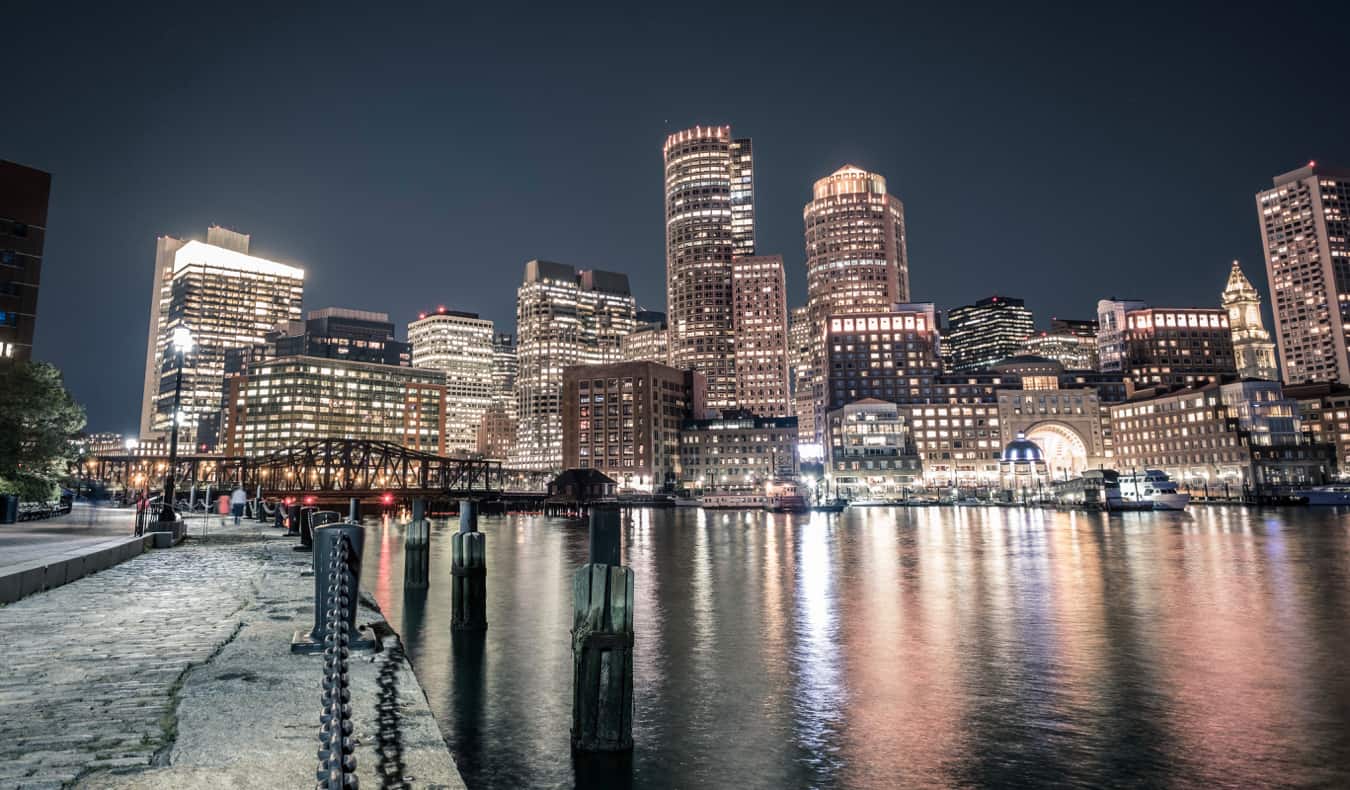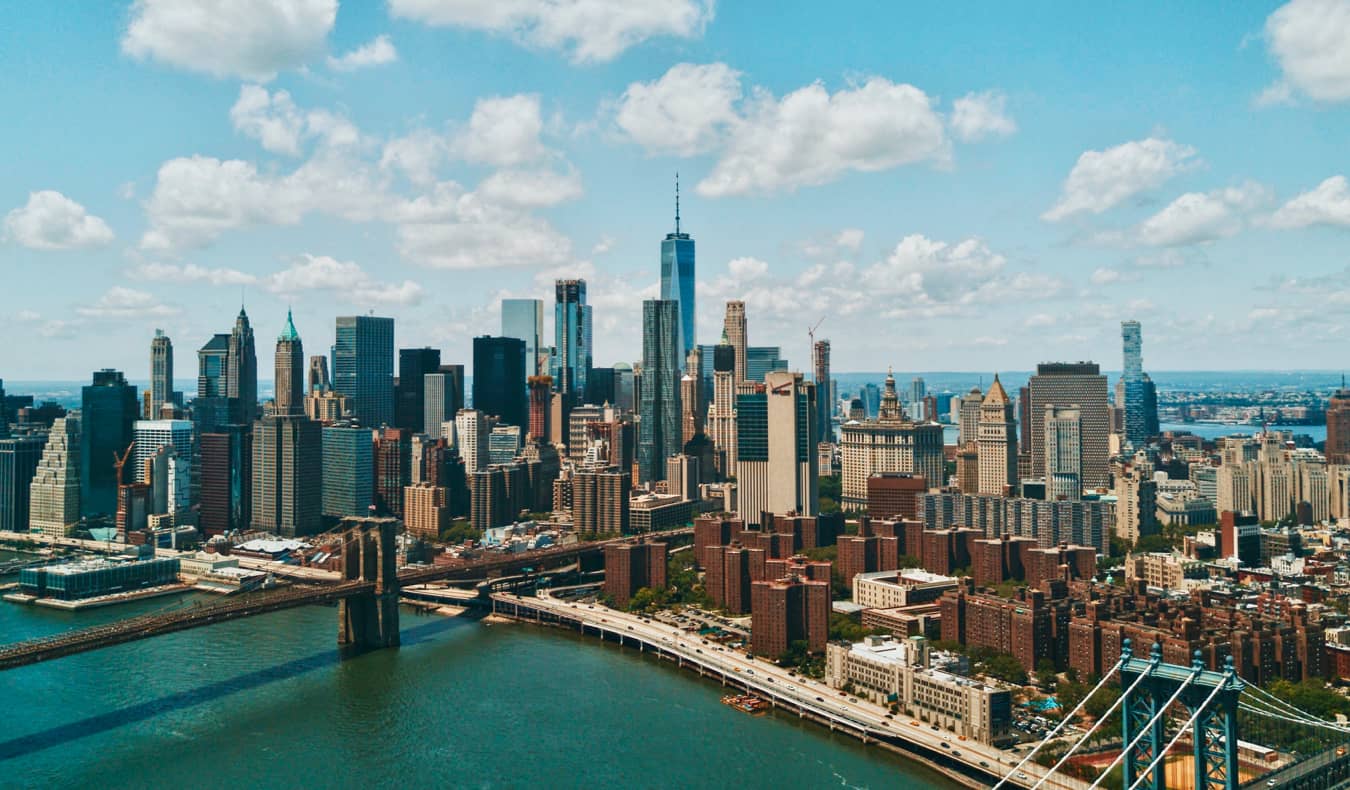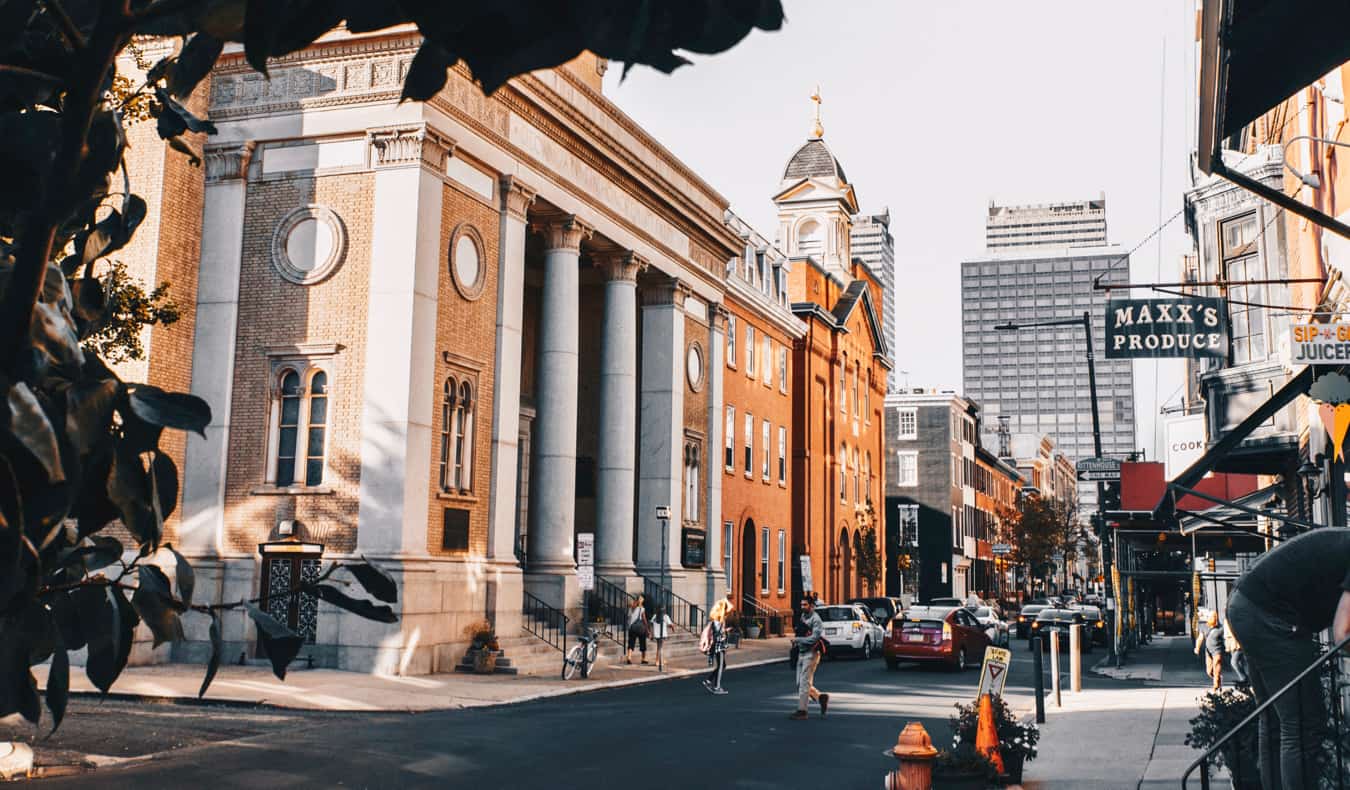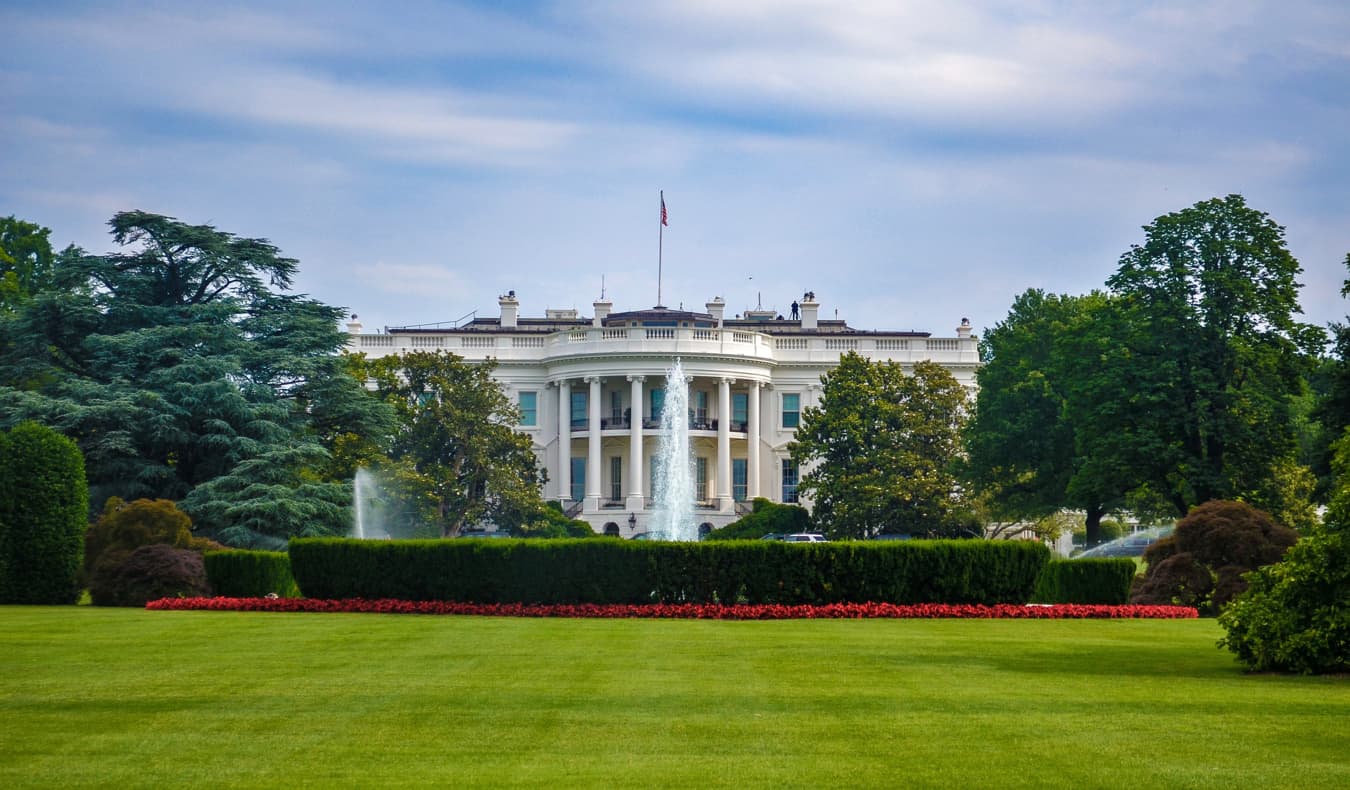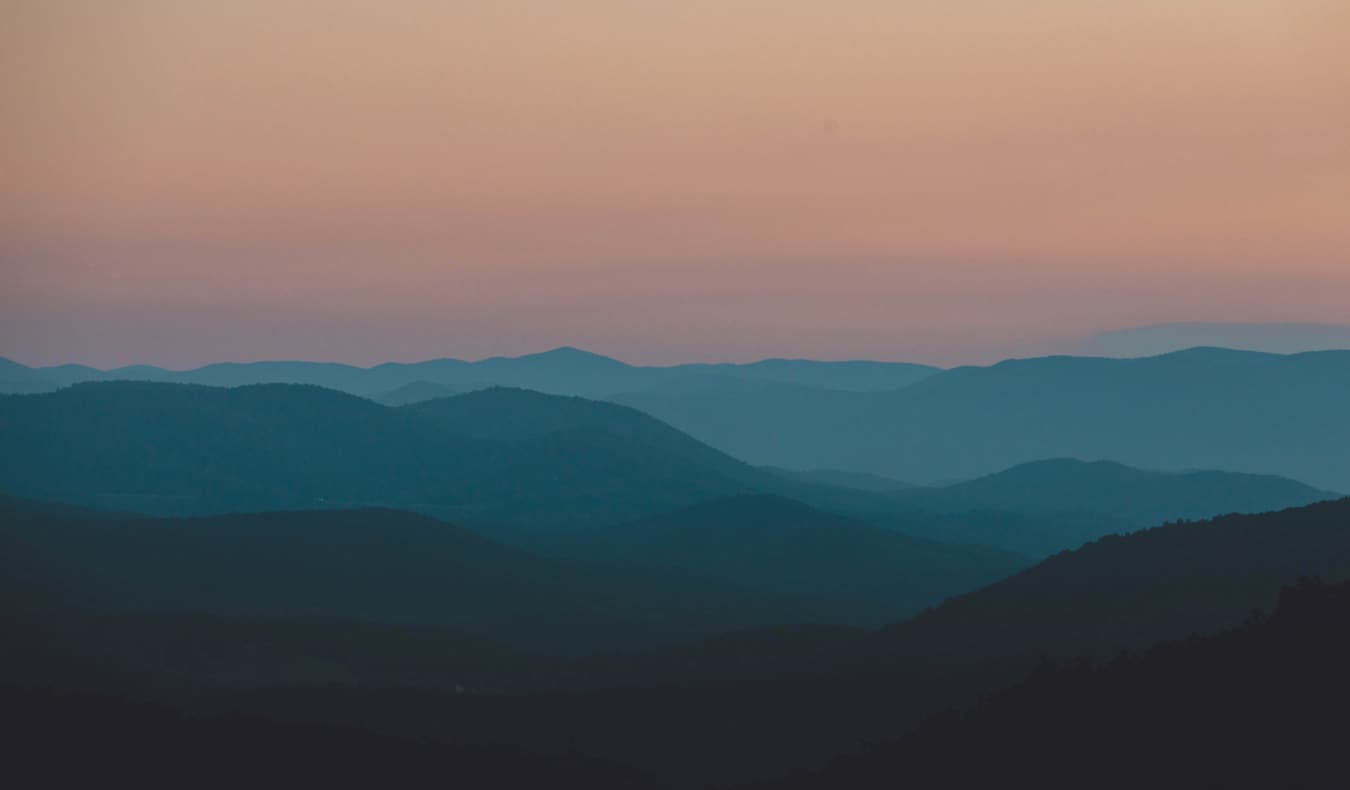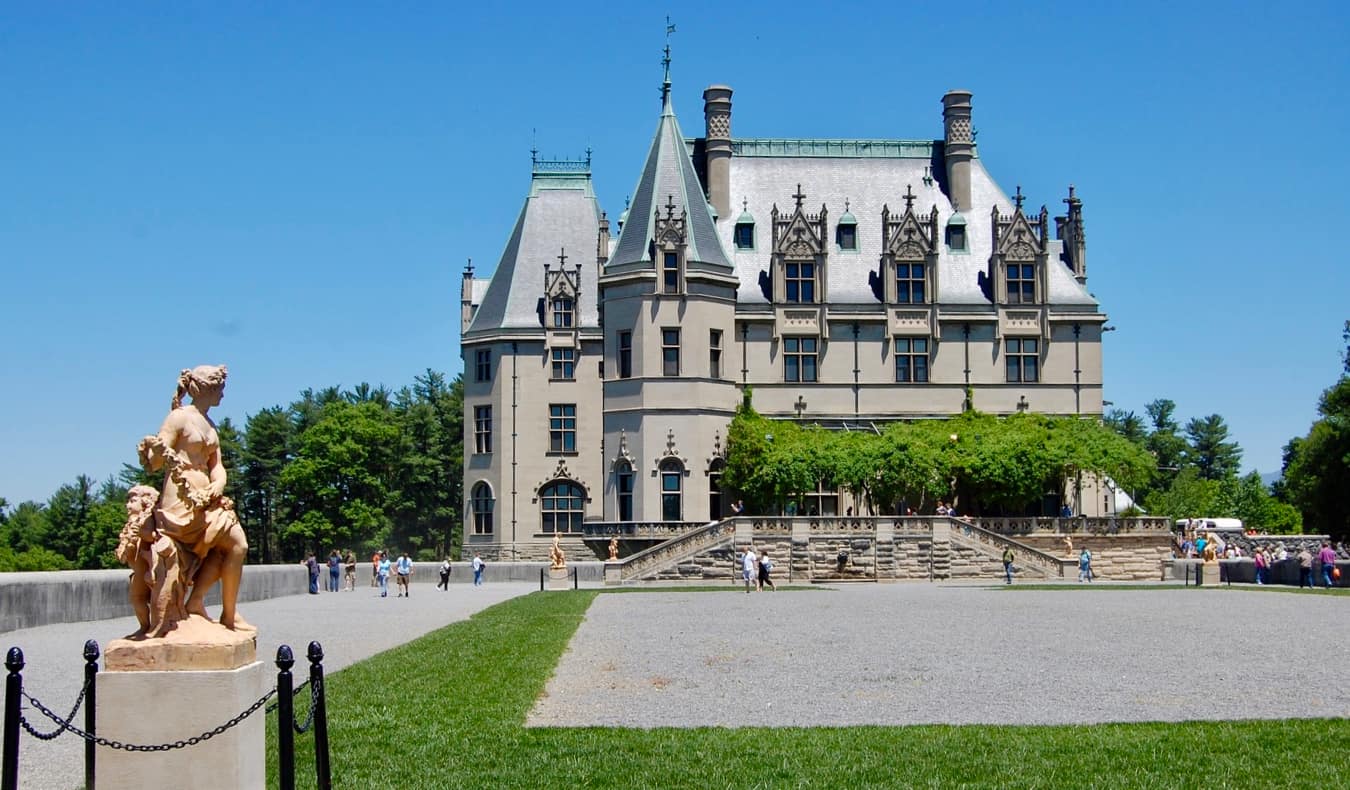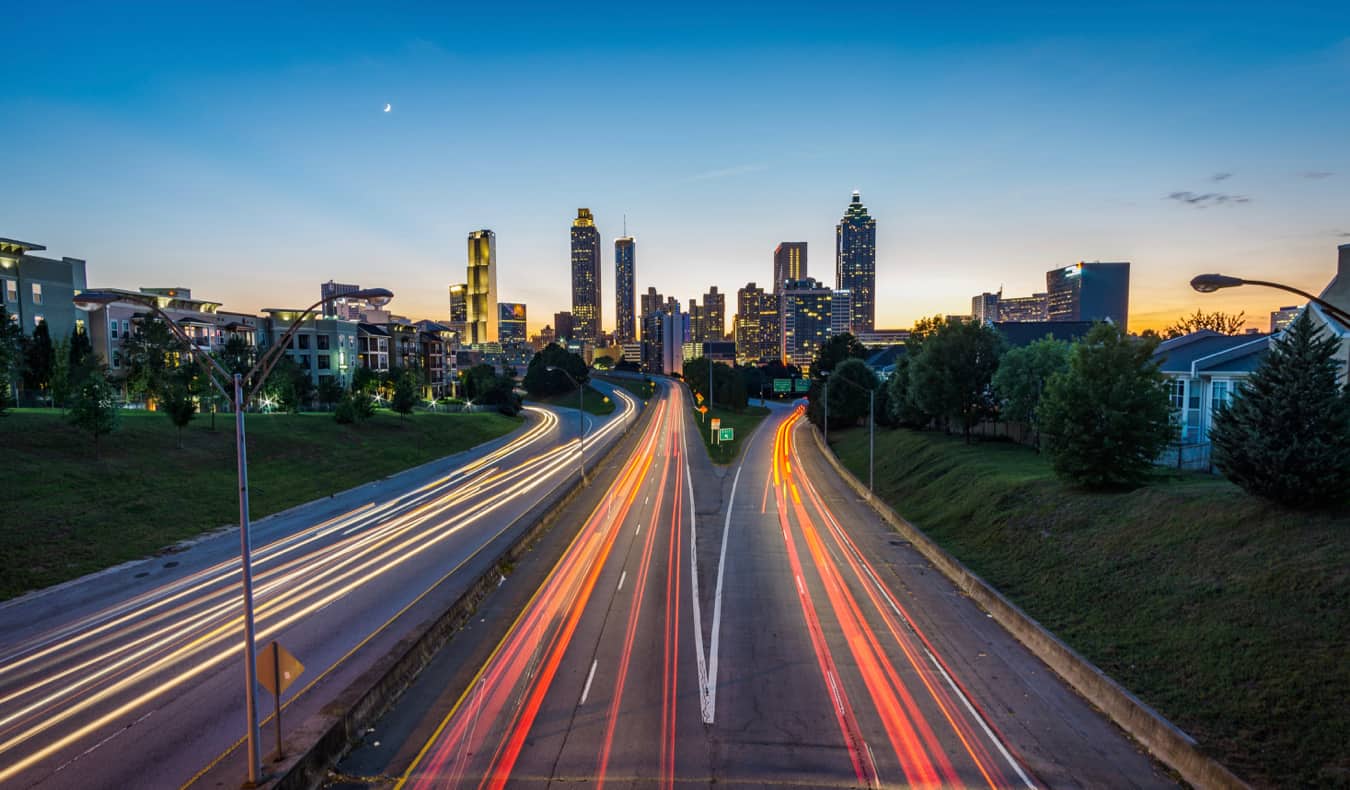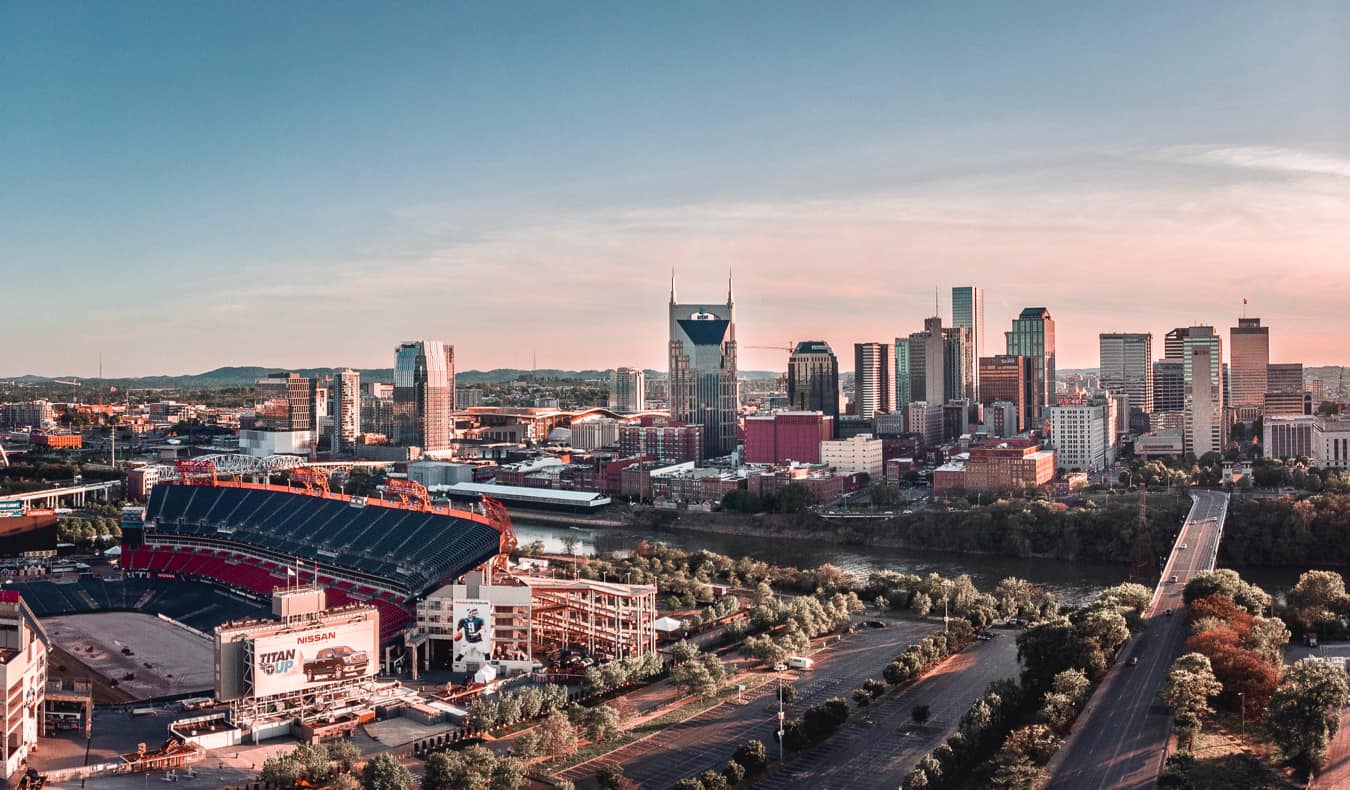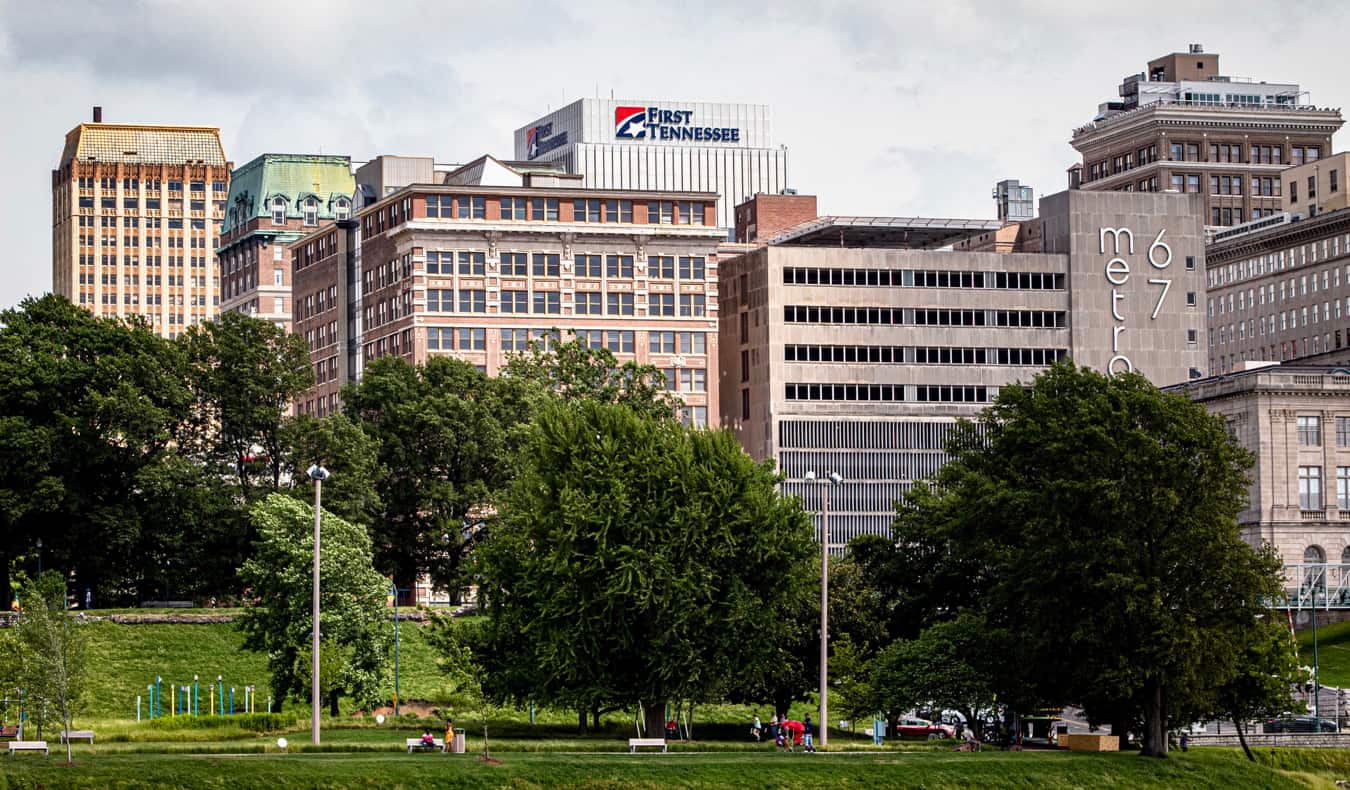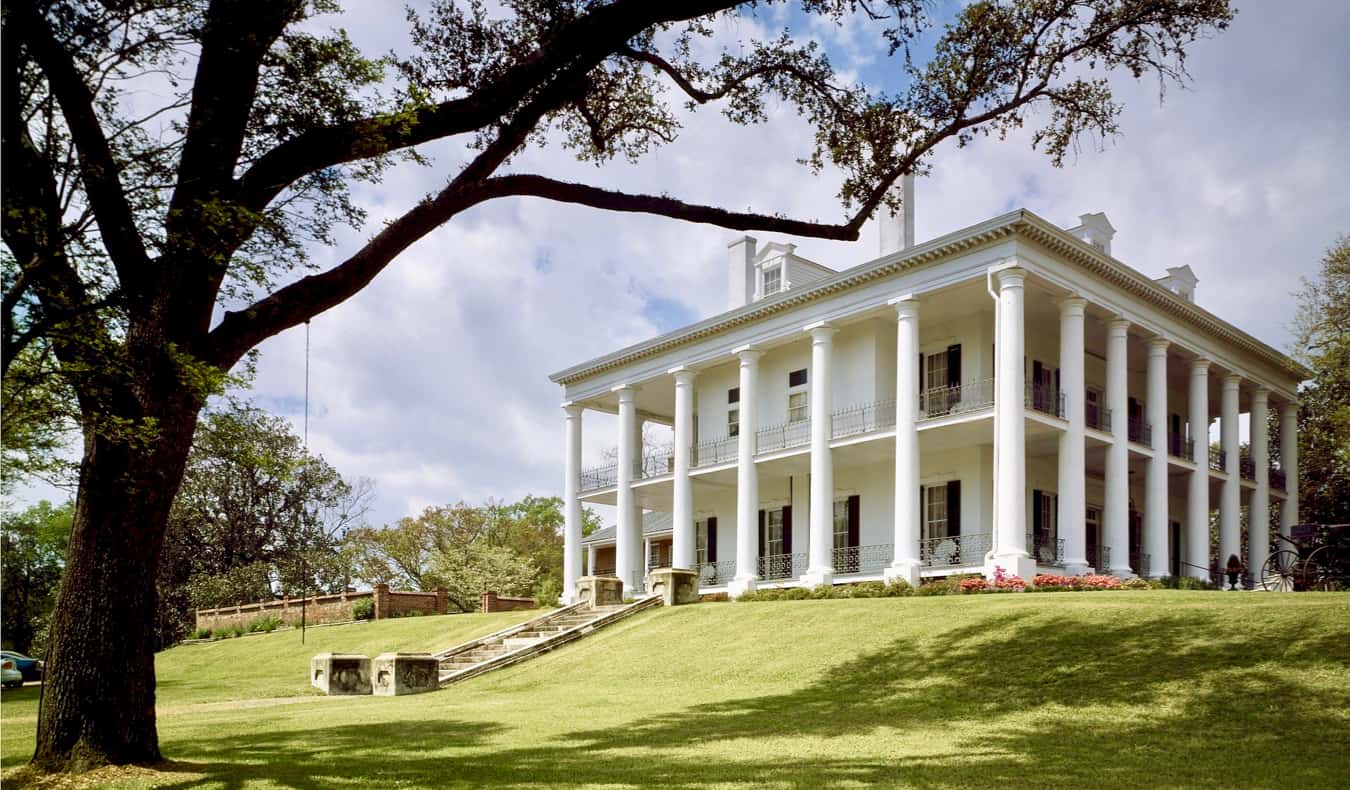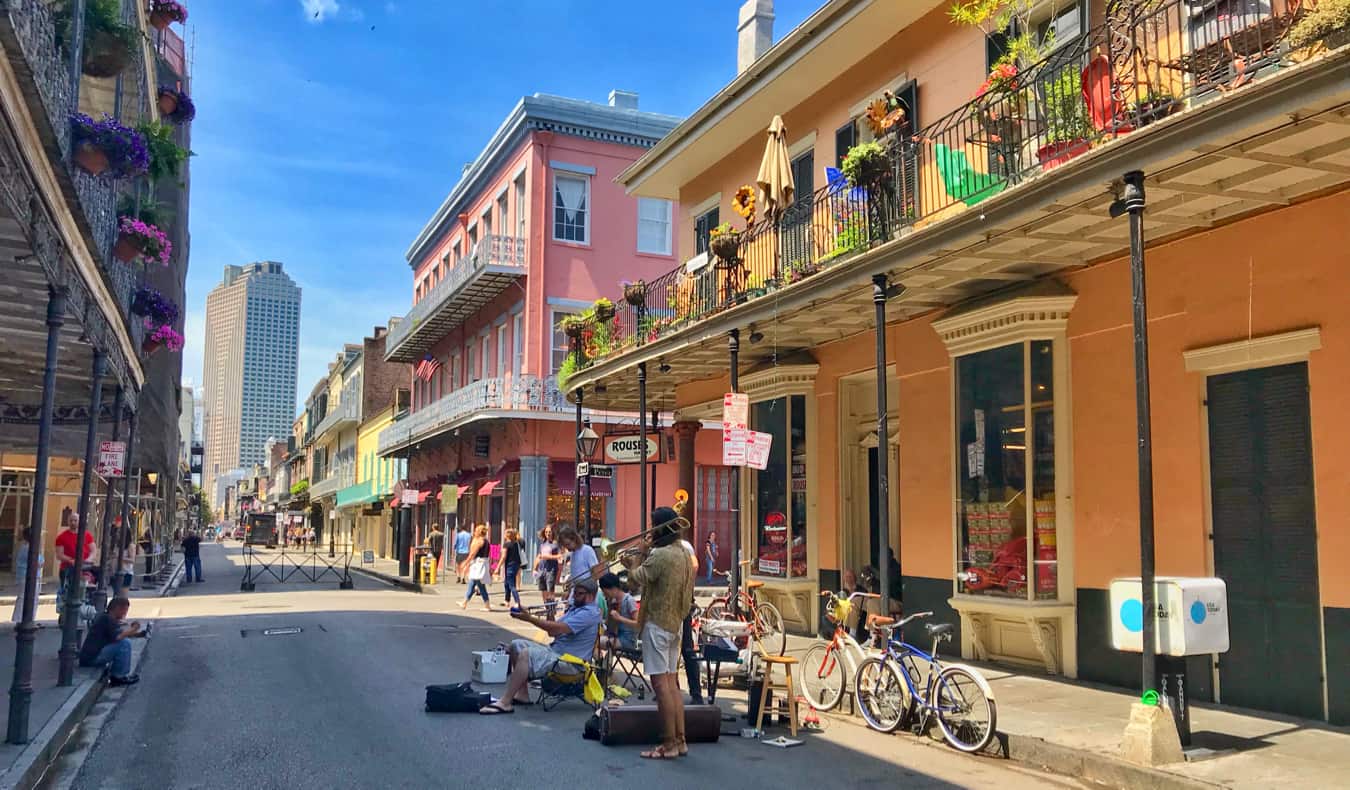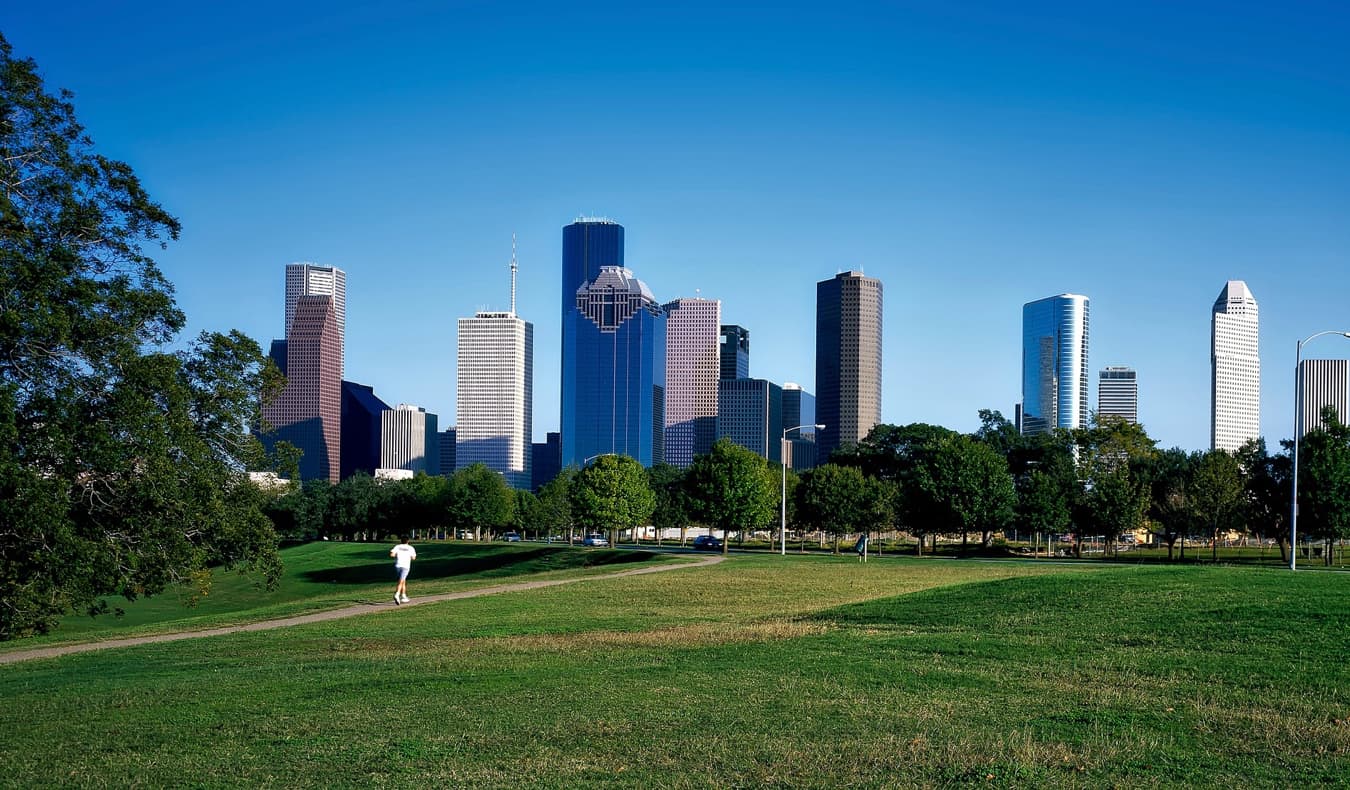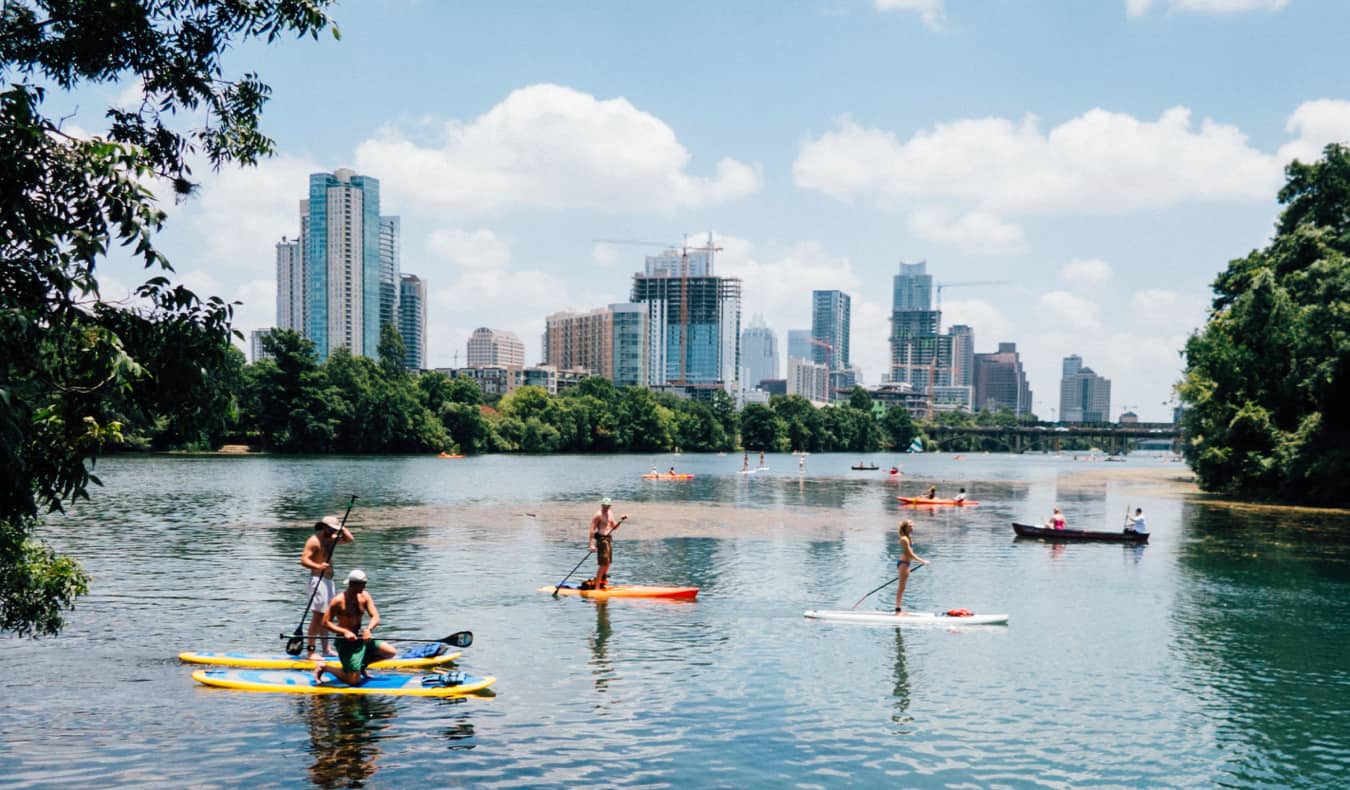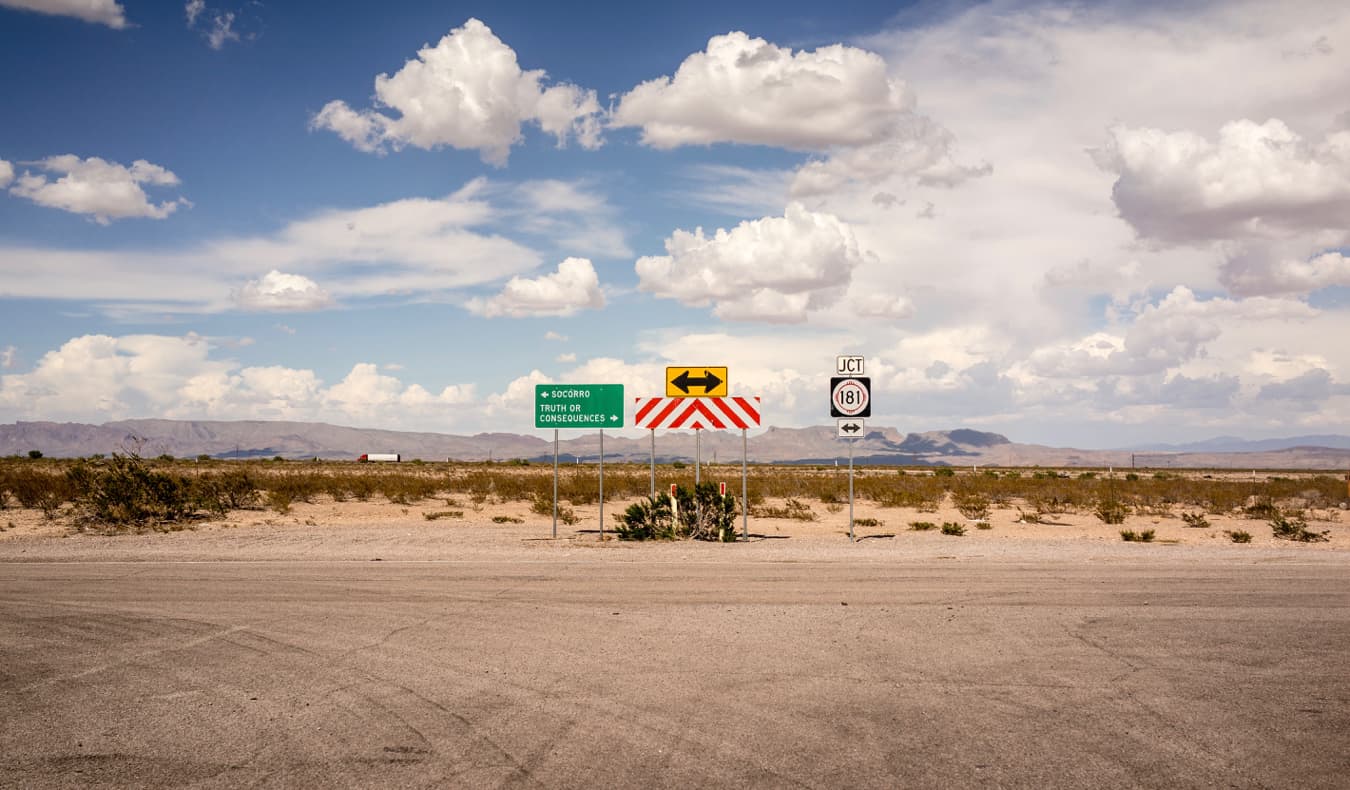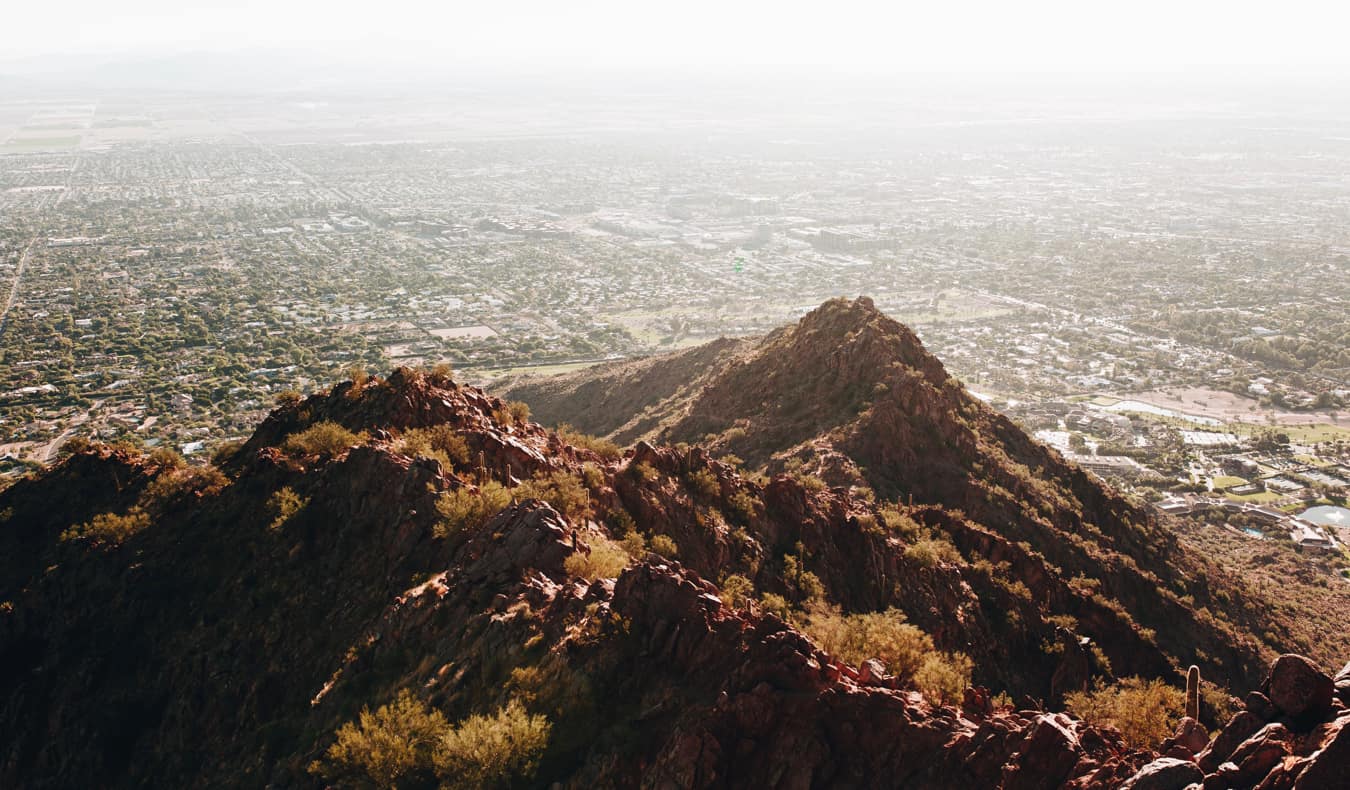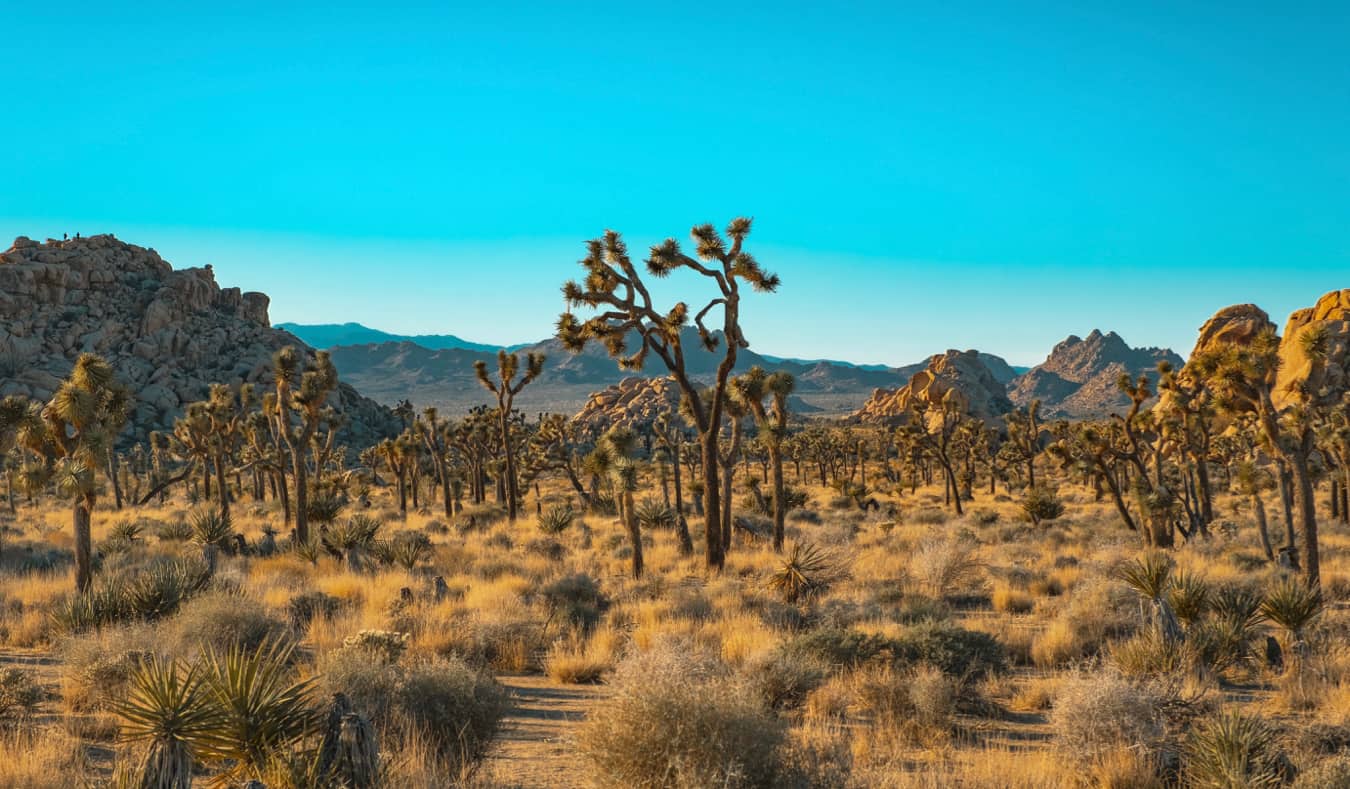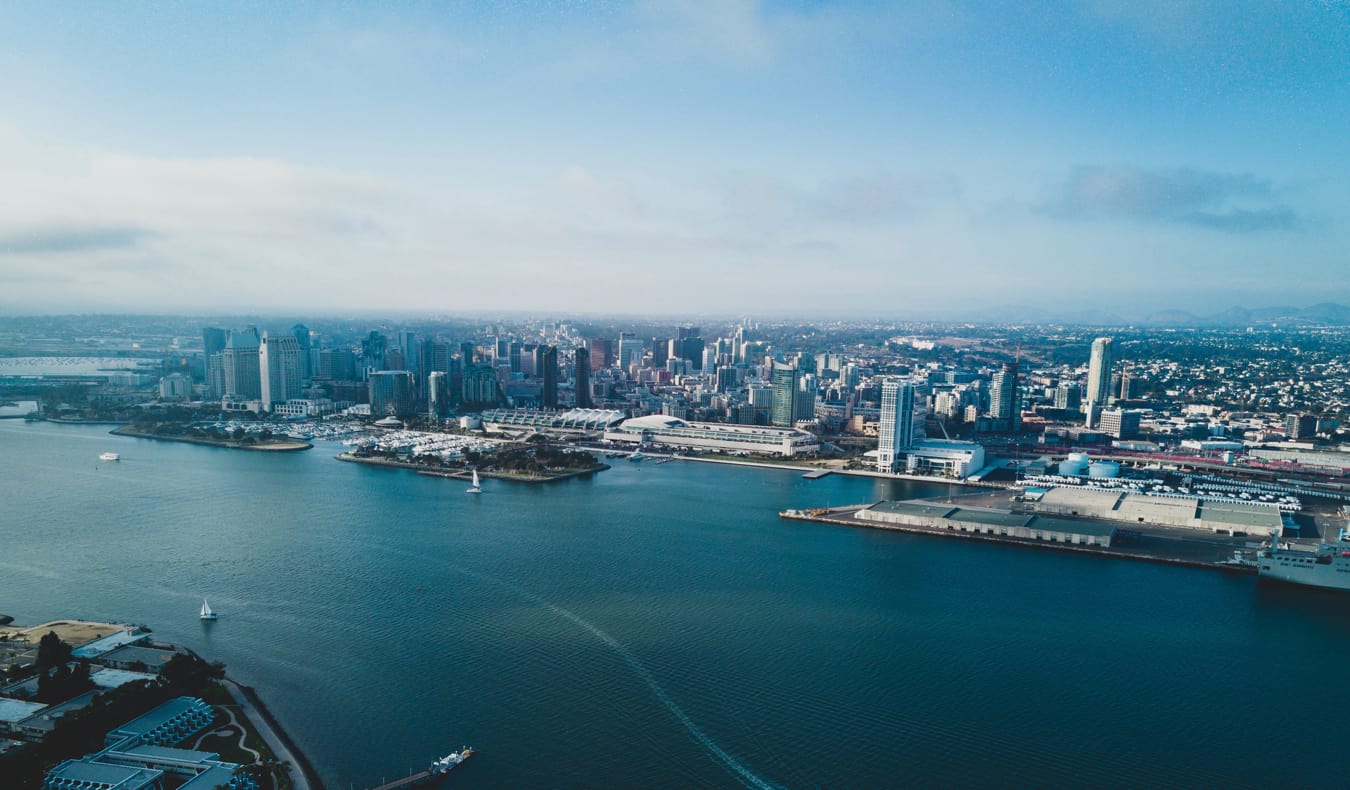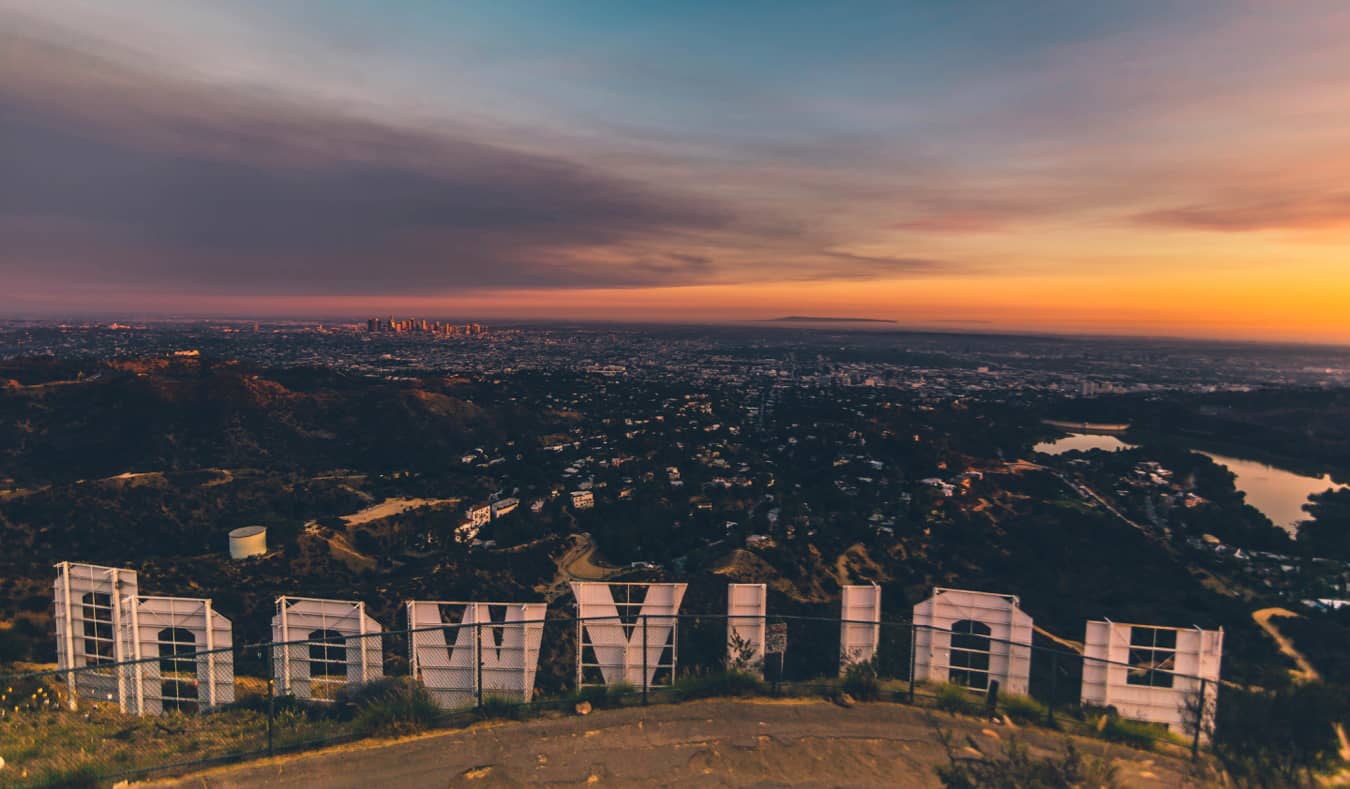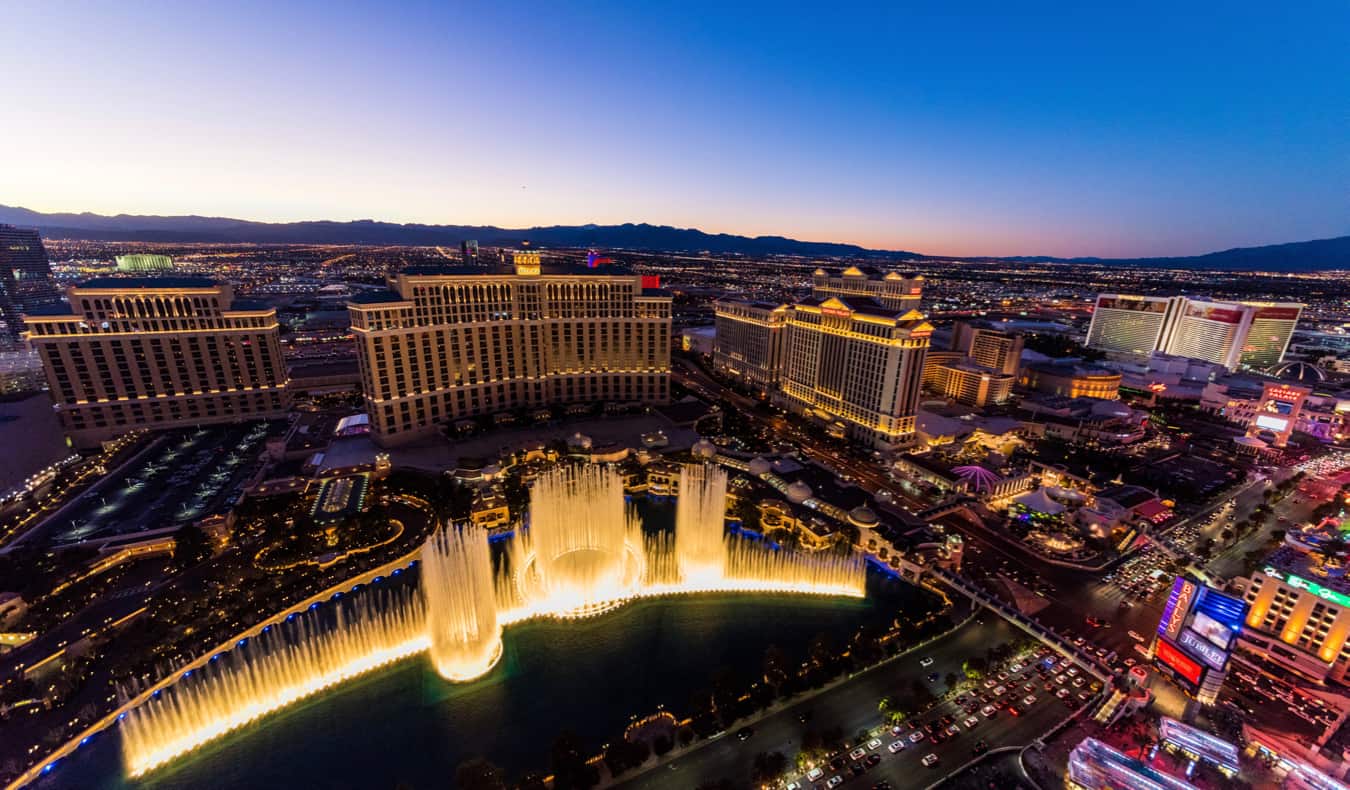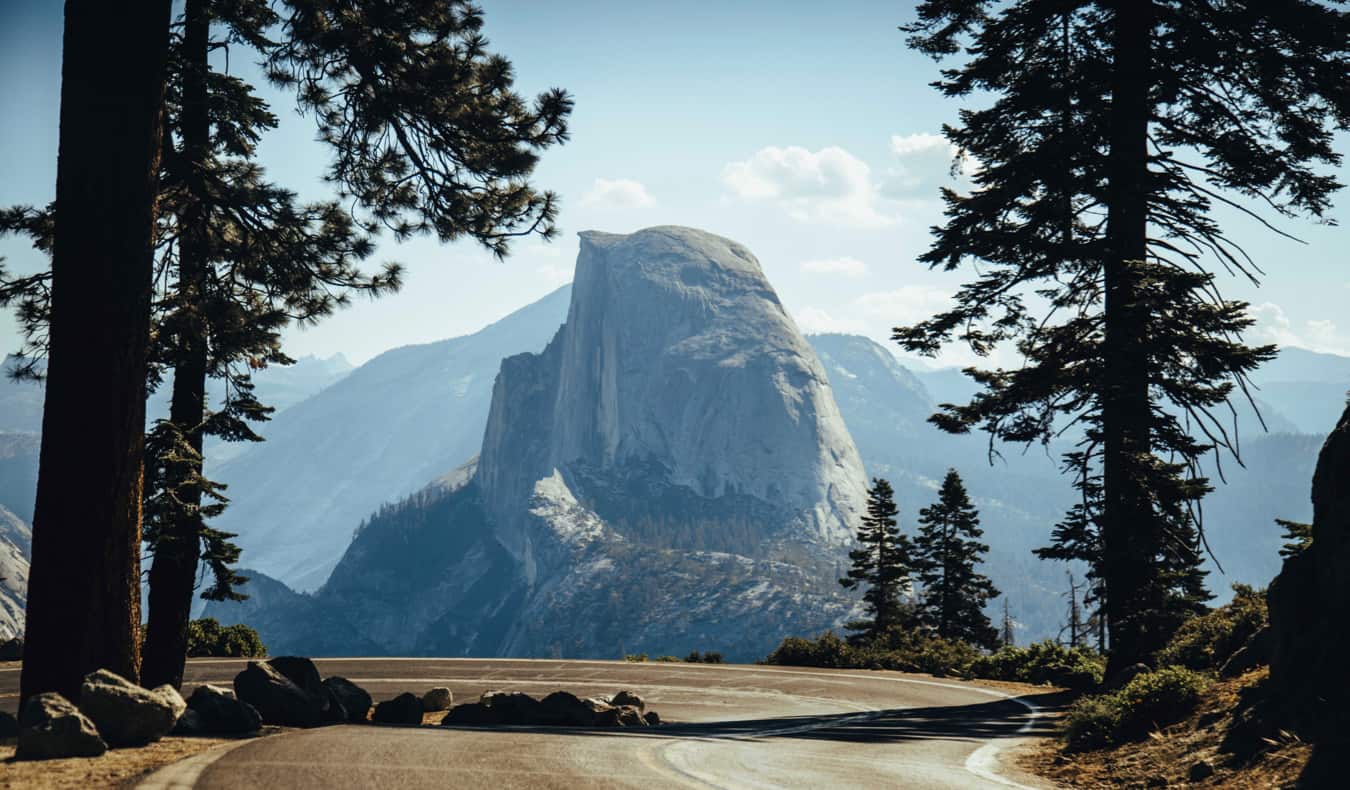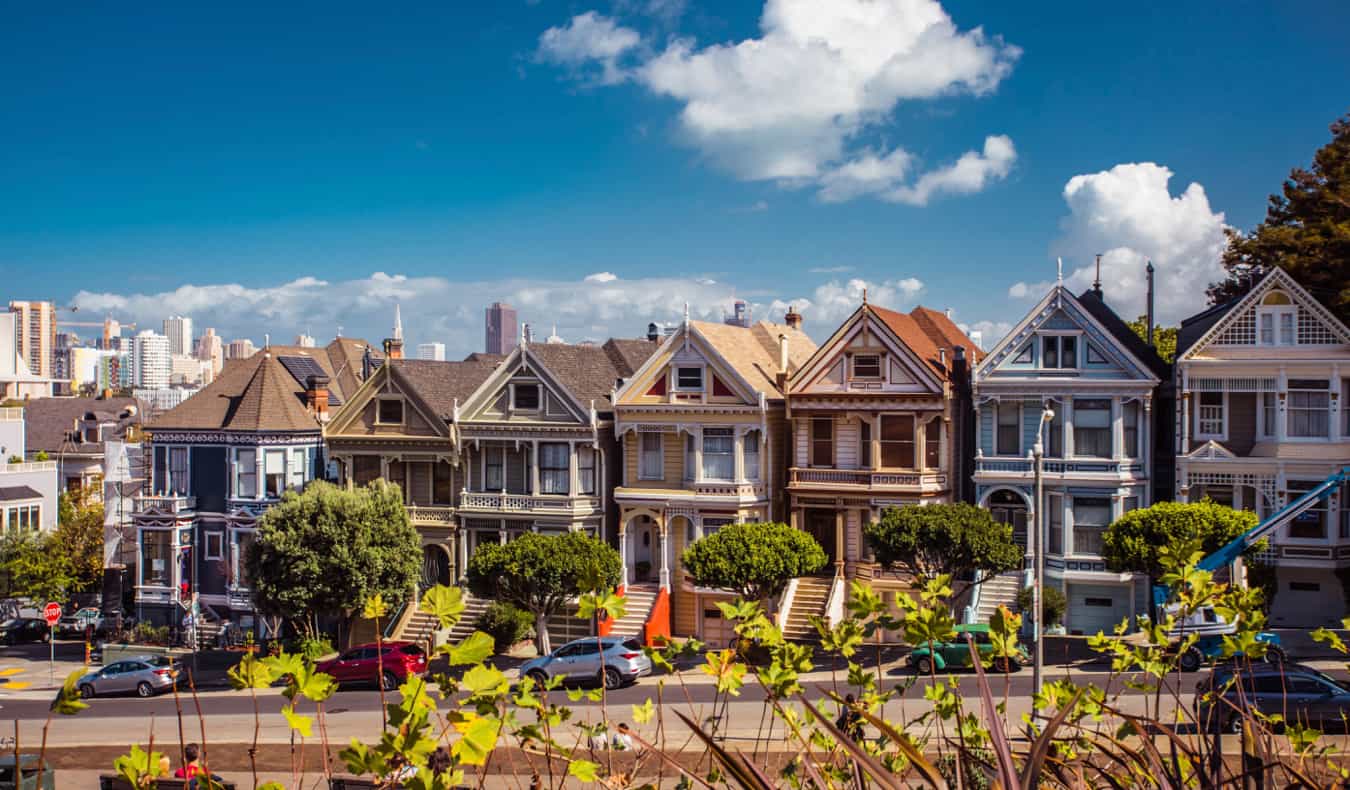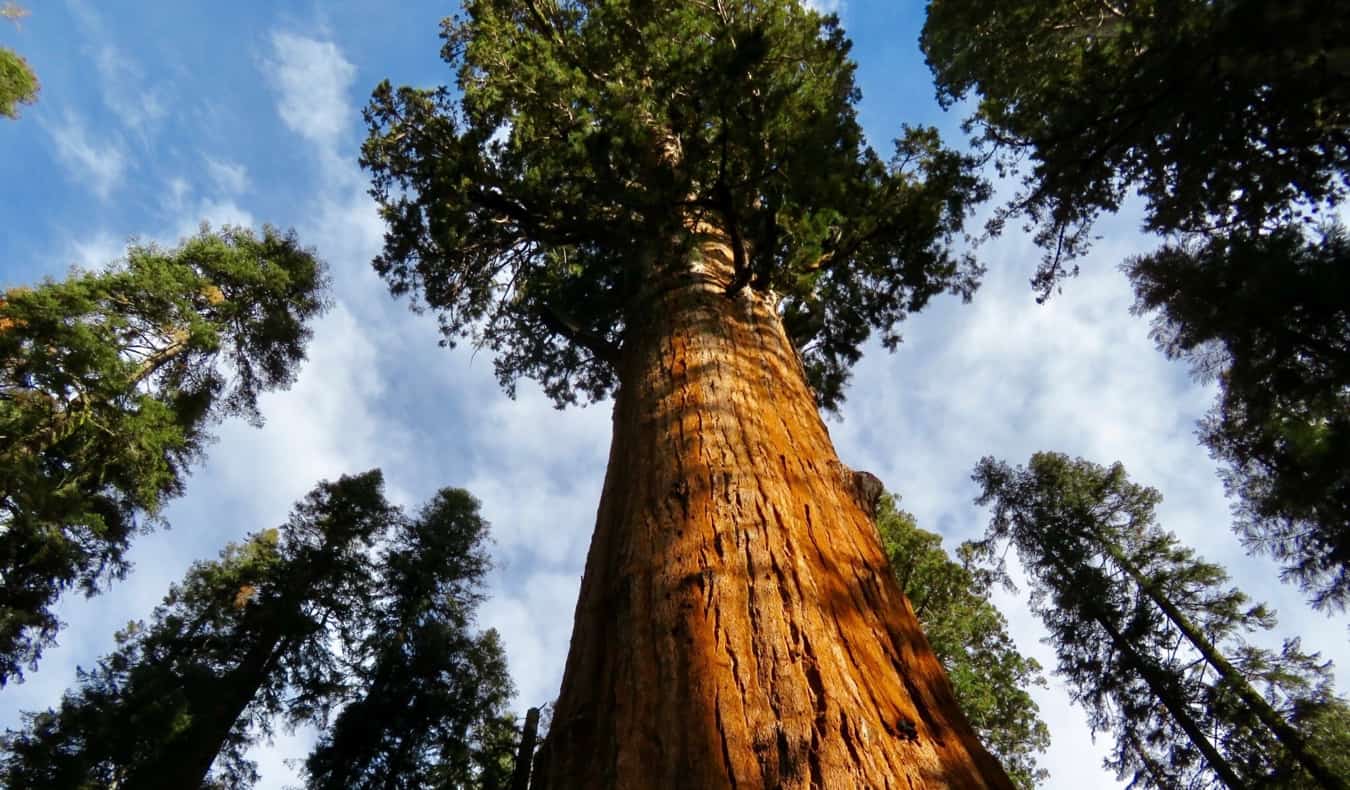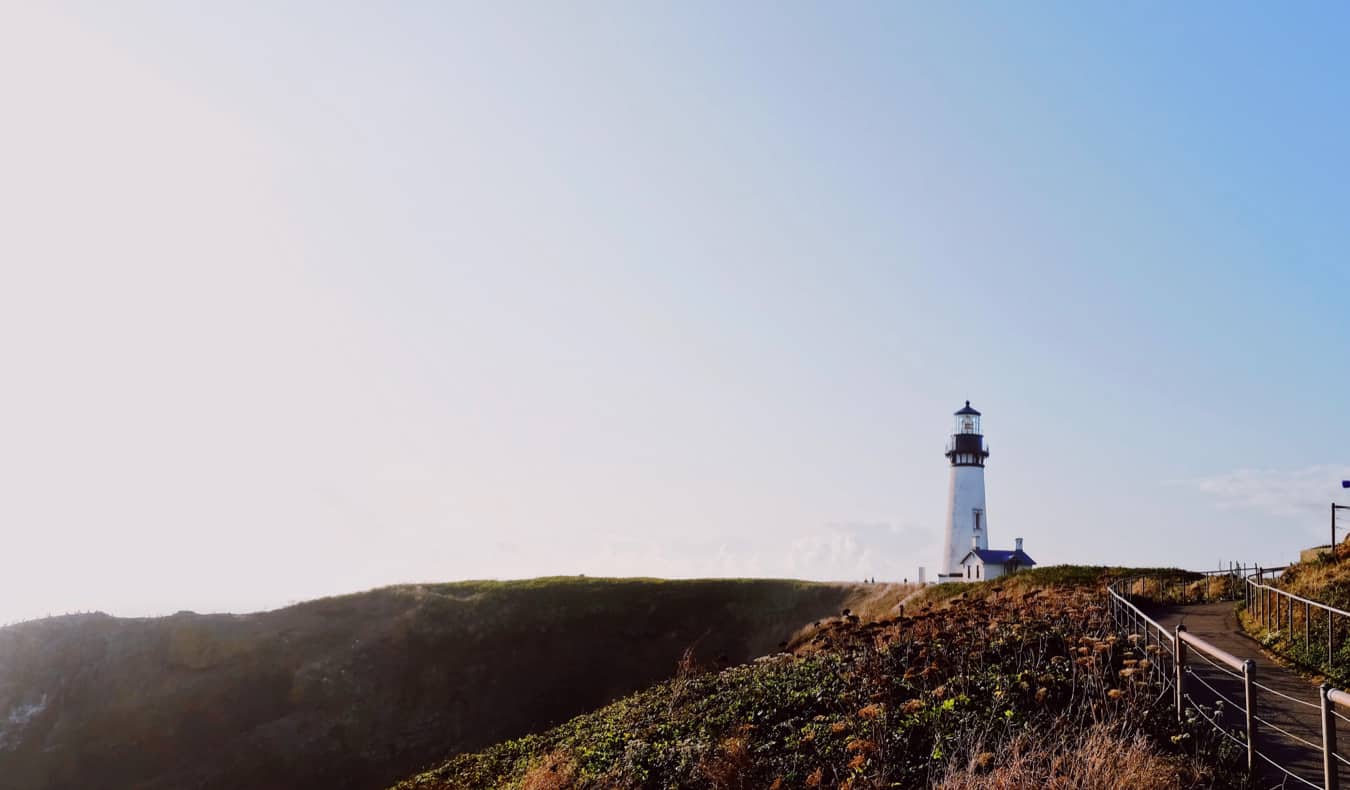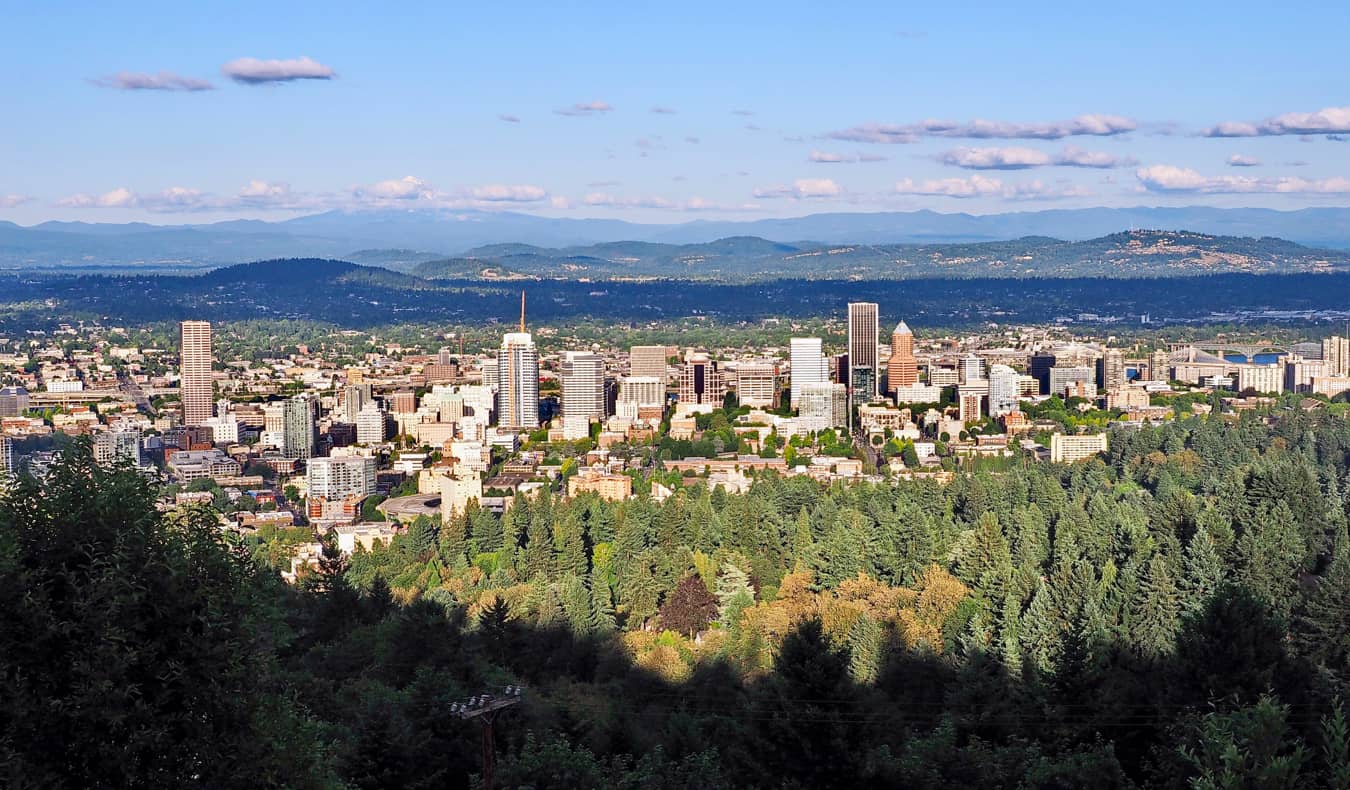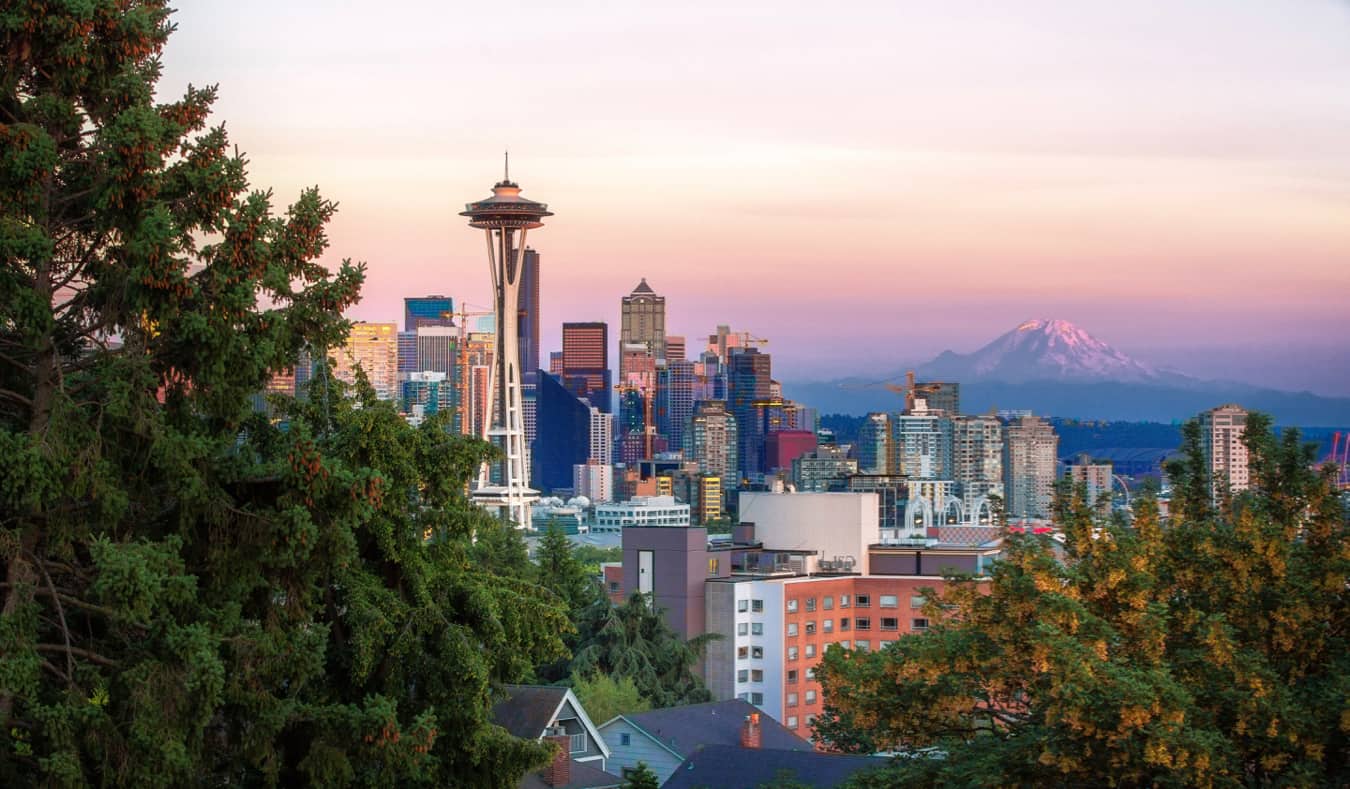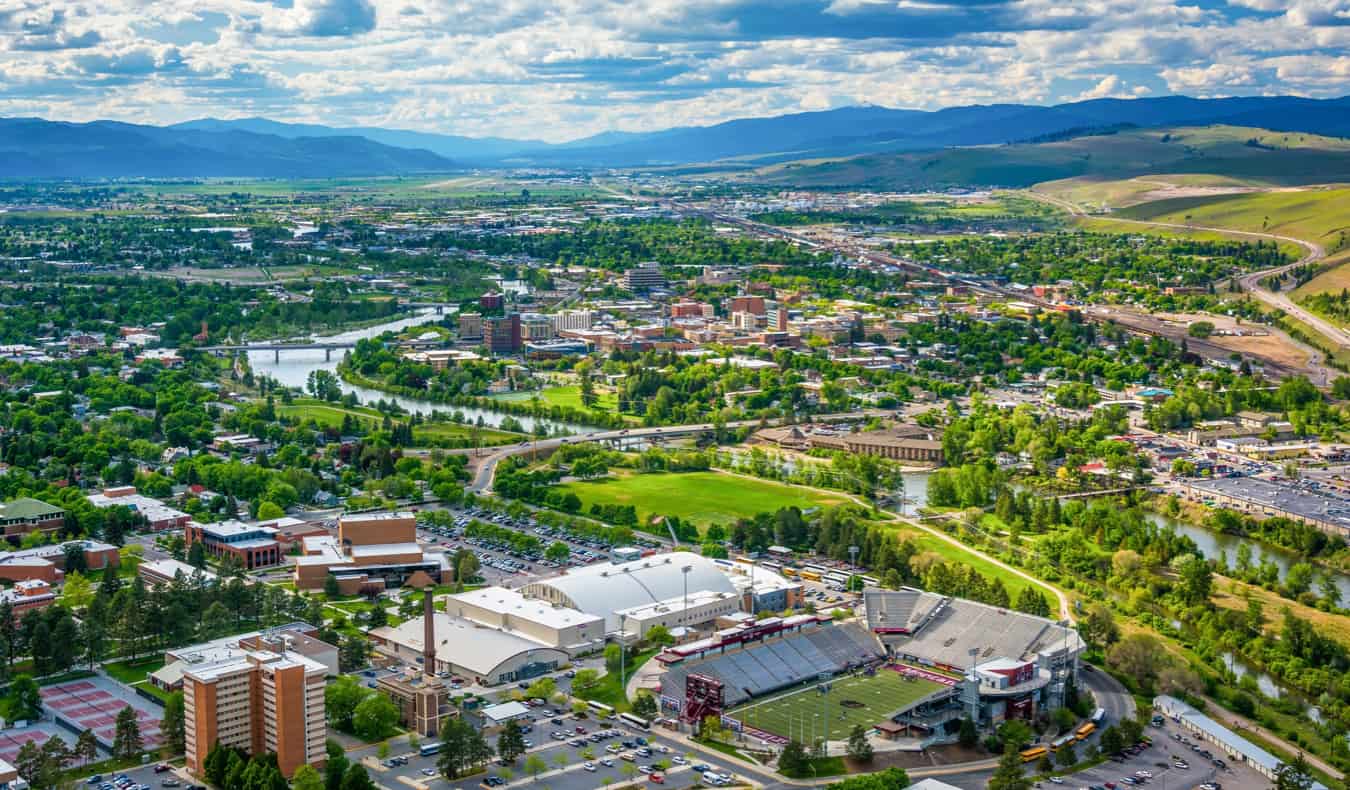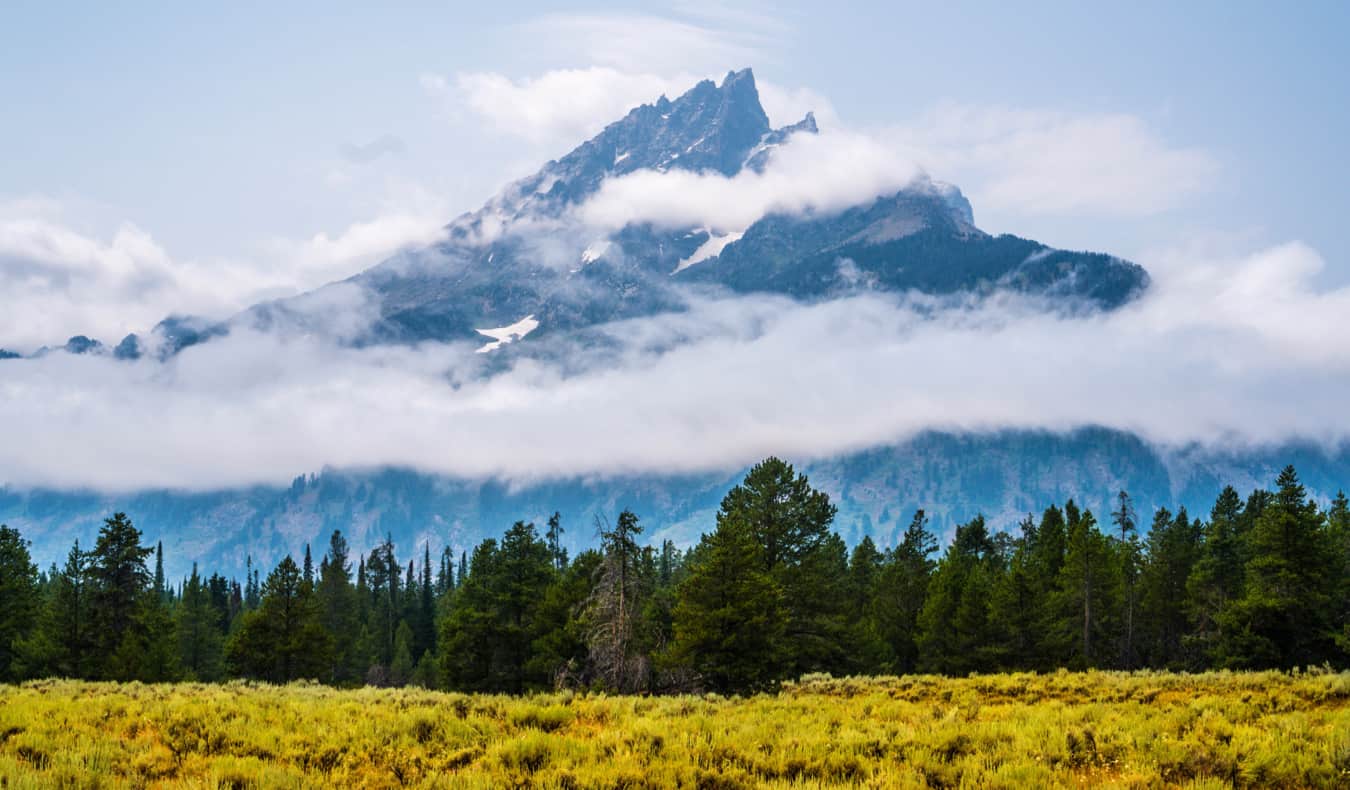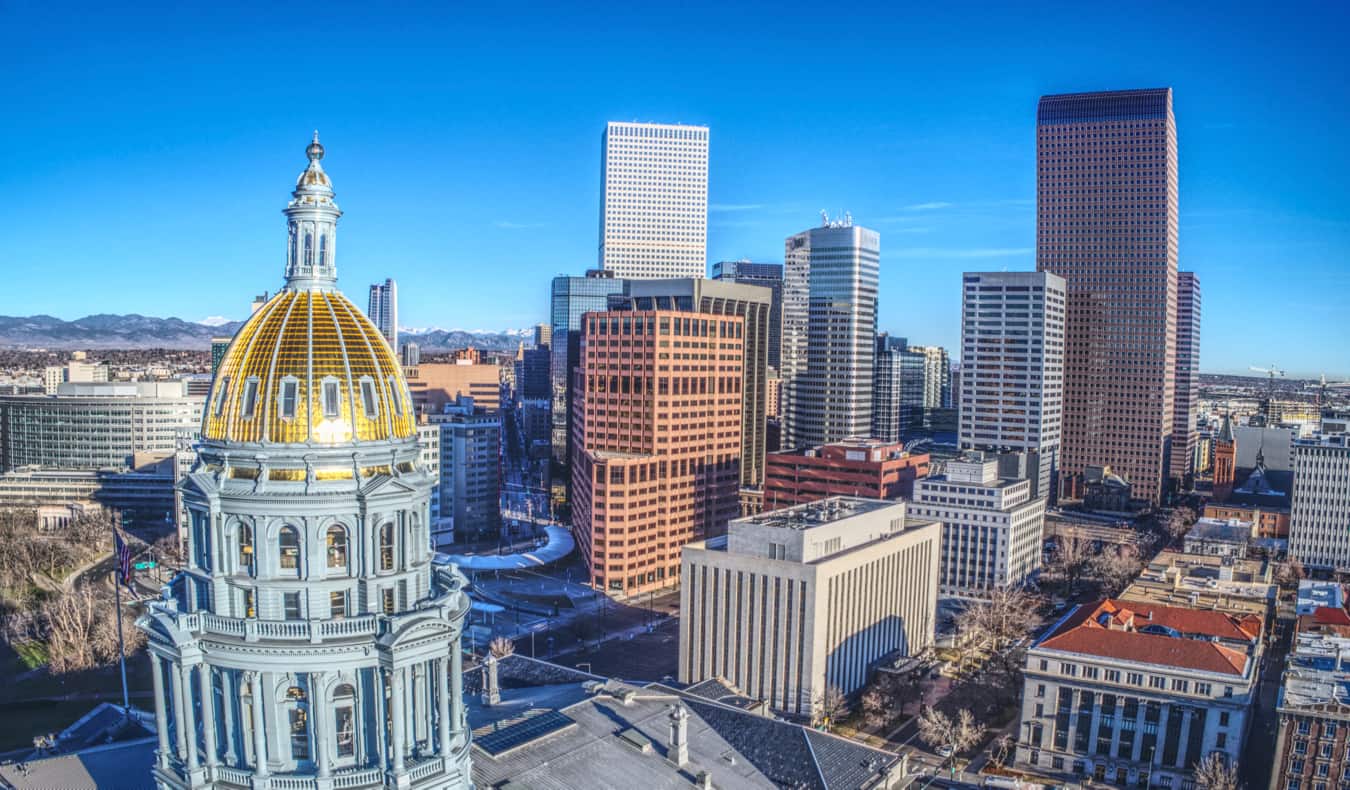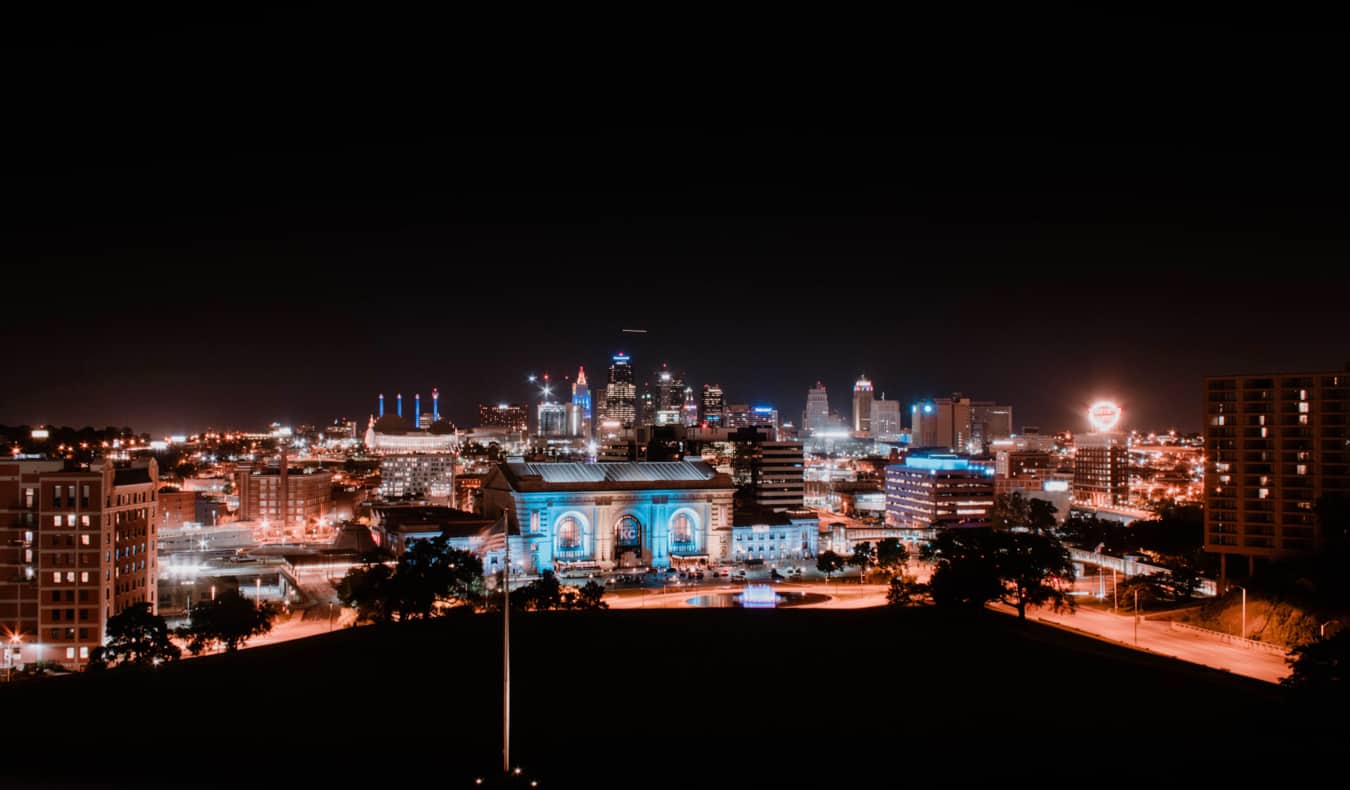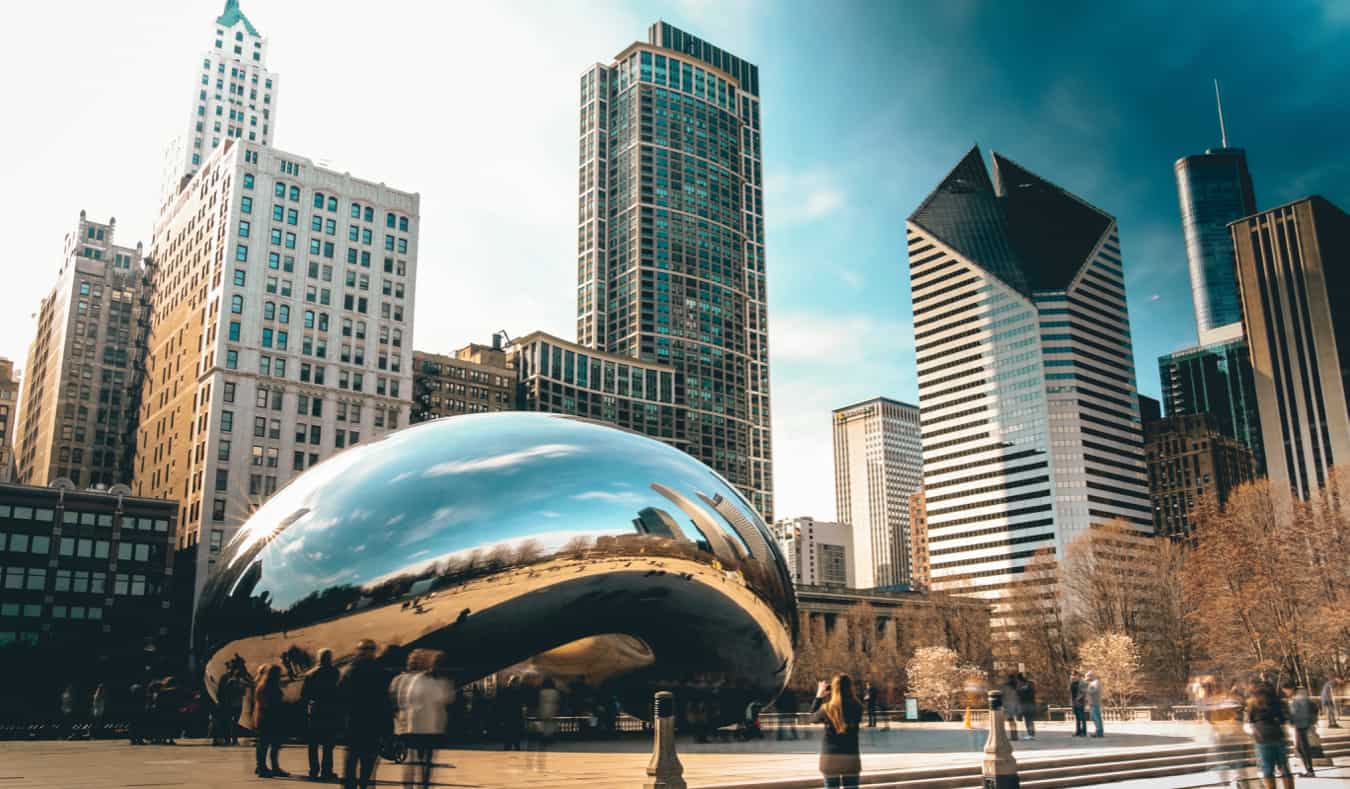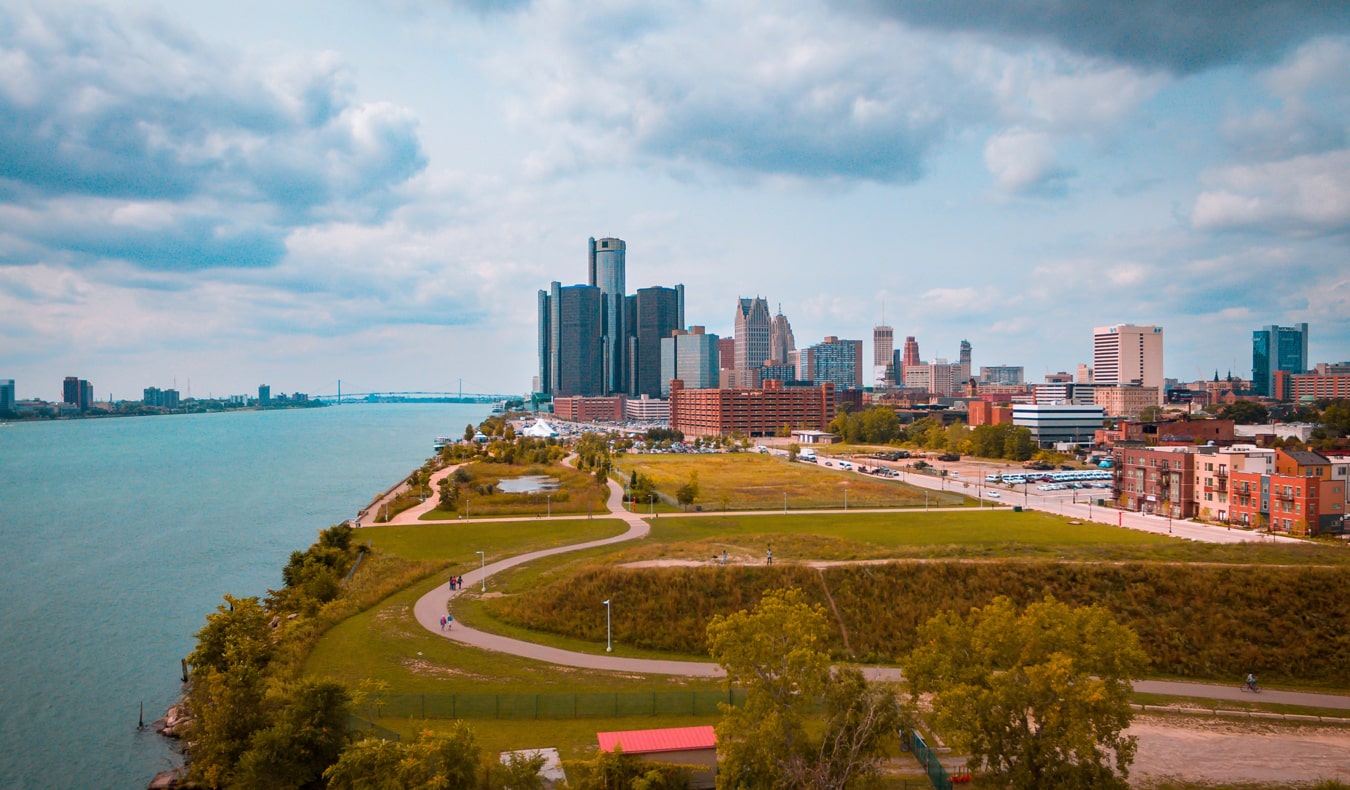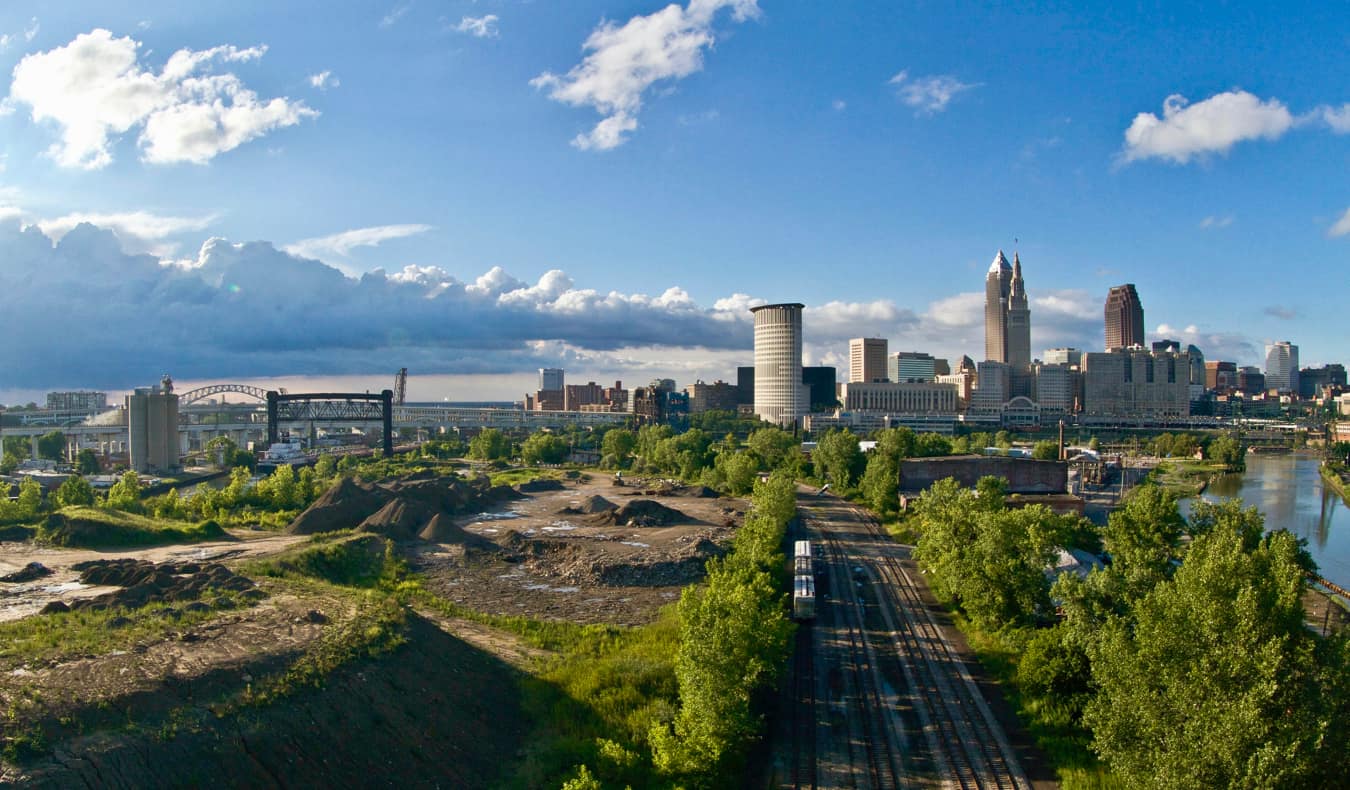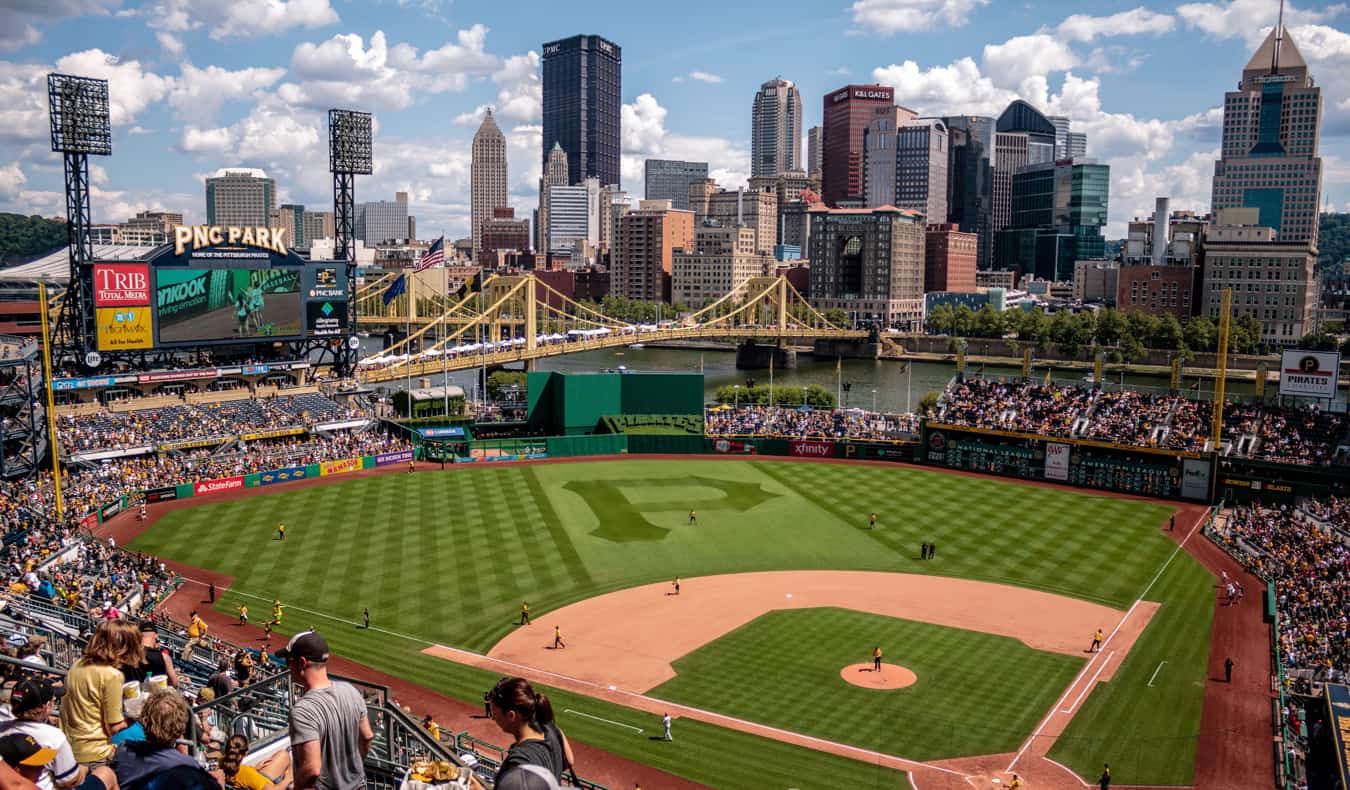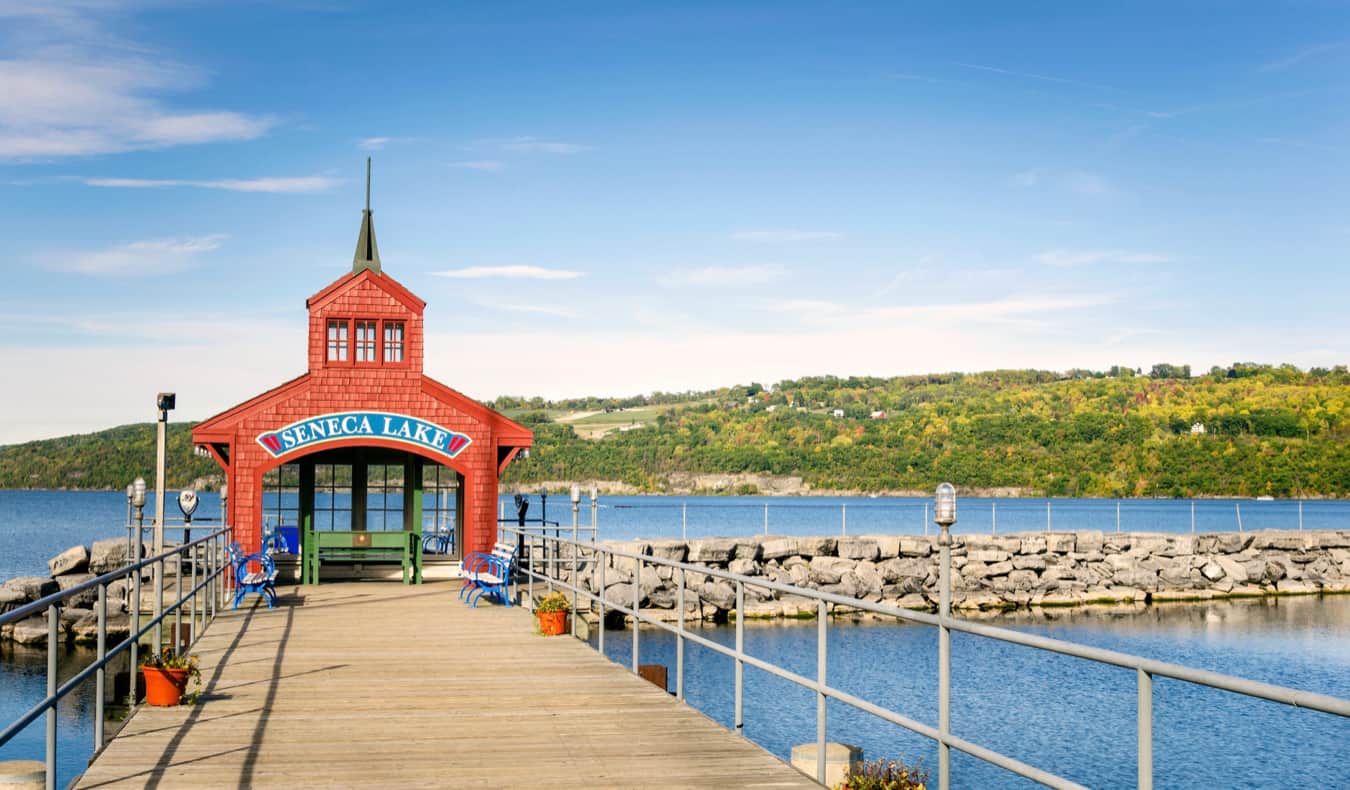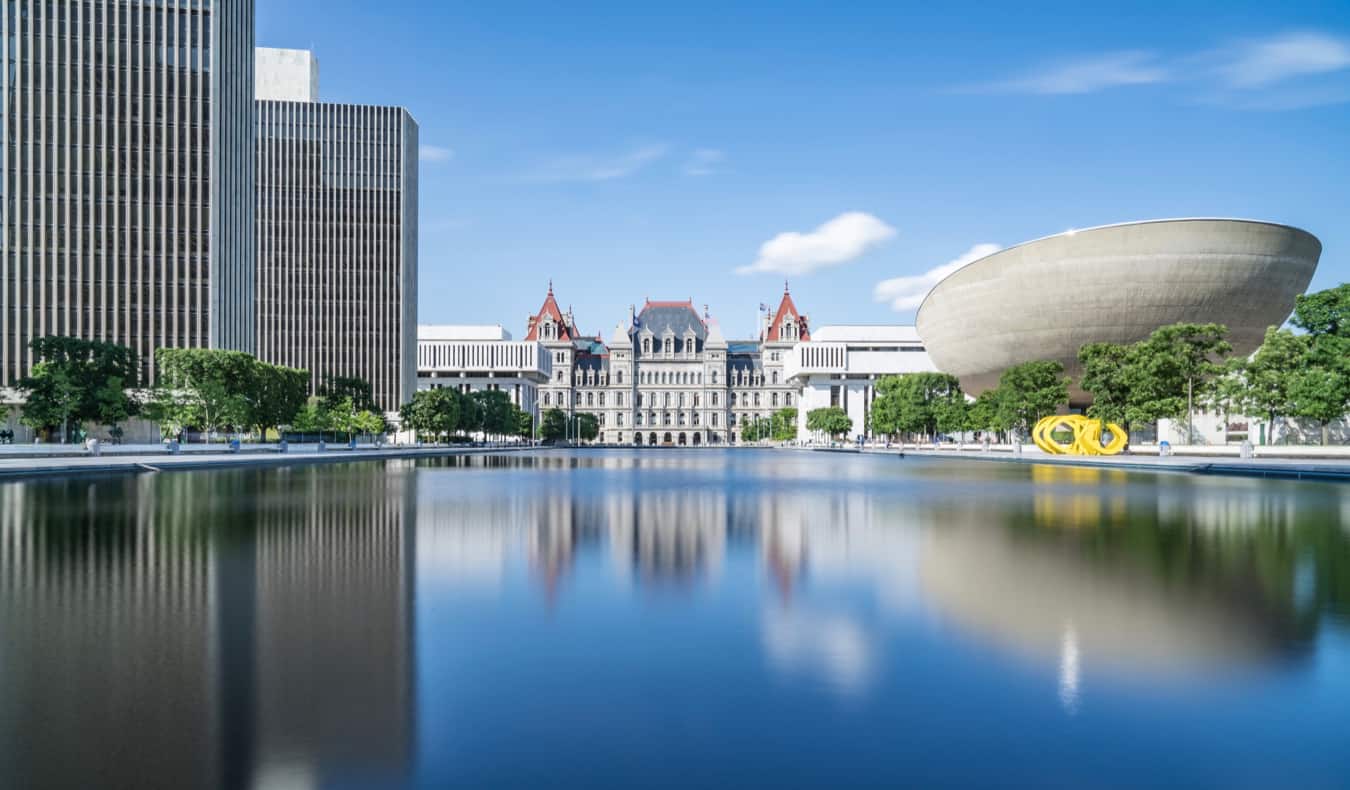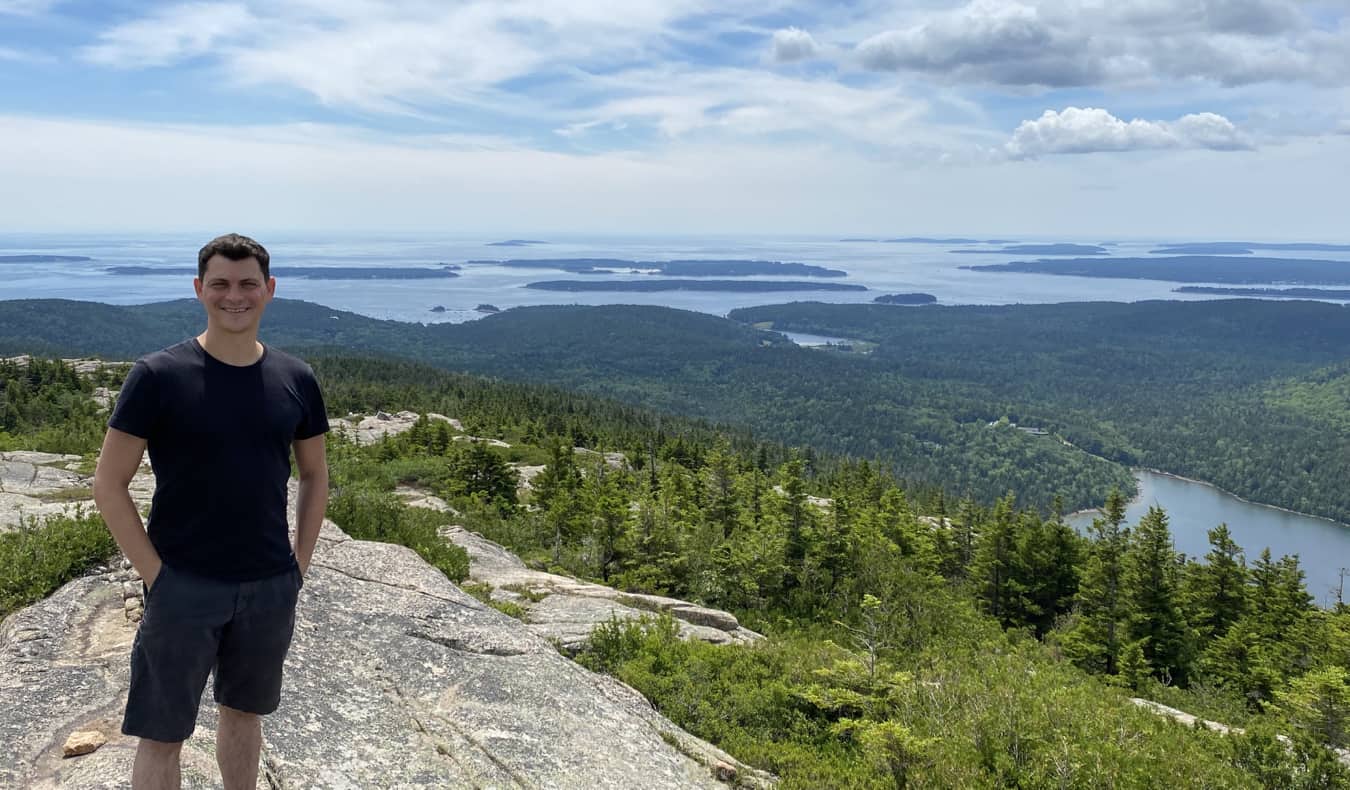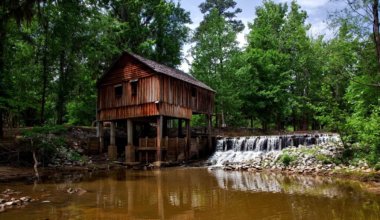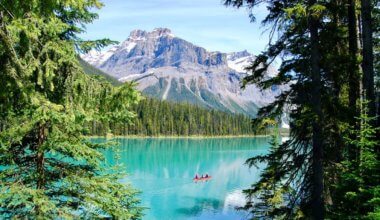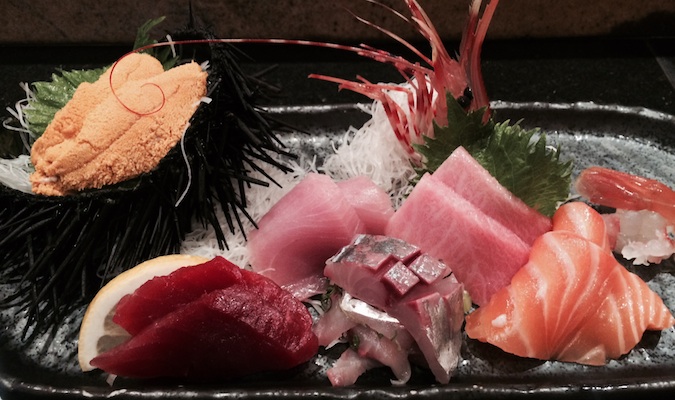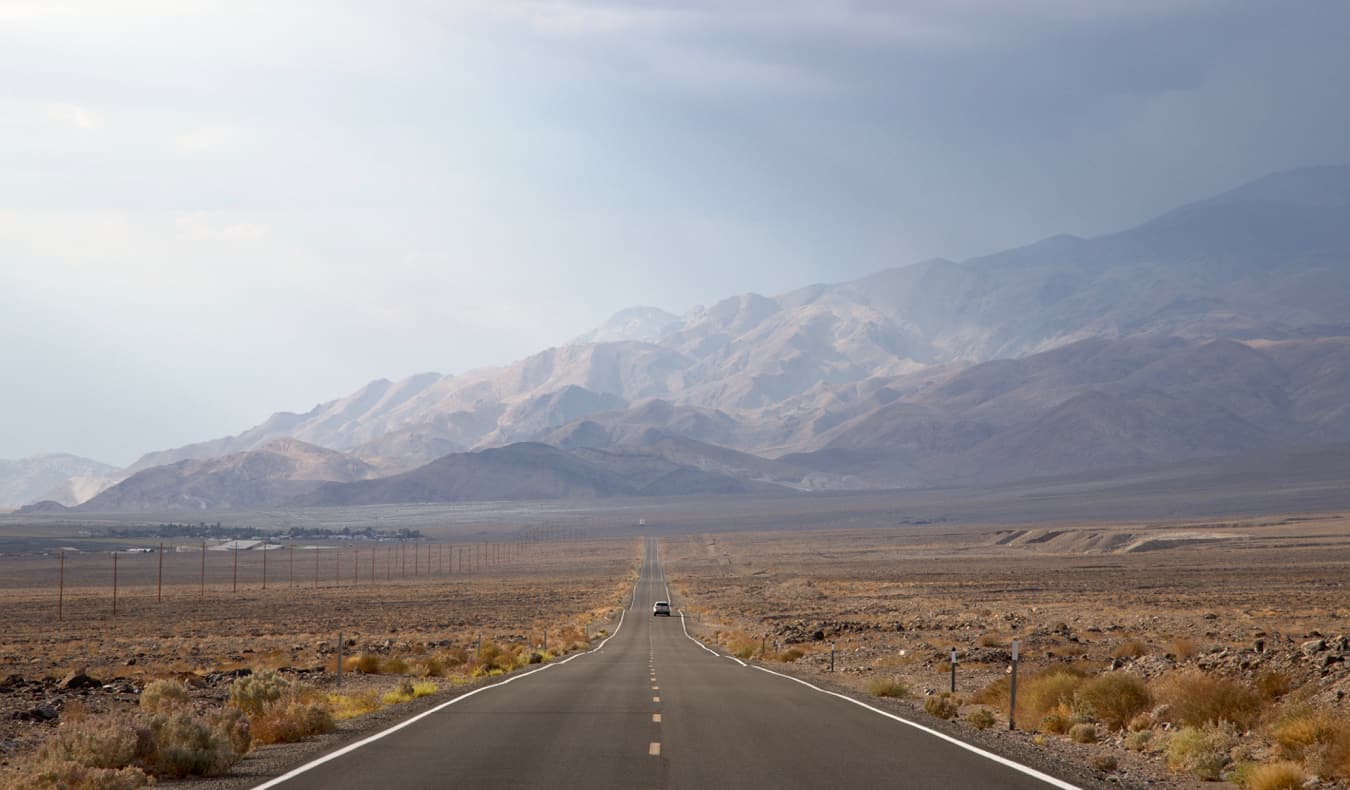
Posted: 7/31/22 | July 31st, 2022
The Great American Road Trip — it’s the kind of multimonth adventure most dream about but few actually do.
While many of us have bucket-list goals of exploring this vast and diverse landscape, more often than not, we end up heading abroad instead. International travel just seems more alluring, exotic, and exciting.
But this country has more than enough eclectic cities, small towns, regional culinary traditions, historic sites, fascinating museums, and natural wonders to keep any intrepid traveler busy.
I’ve done five big US road trips (two that completely crisscrossed the country and three in various regions) that cumulatively add up to a year on the road (and that doesn’t count all the “regular” trips, vacations, and weekend getaways). I’ve seen a lot of the United States.
As COVID-19 has caused us to consider our backyard more and more, many Americans are turning to domestic travel. We’re finally exploring all the wonders our own country has to offer.
So, because of that, I’ve created an epic four-month itinerary for traveling around the States. I think it balances time in cities with that spent relaxing in nature.
It may seem like a lot but four months just scratches the surface. And, since I don’t expect most of you to have four months, you can easily break this trip into smaller portions. It’s much better to concentrate your focus rather than try to see a lot in a short amount of time.
One note before we begin: There are so many routes you could take that it’s impossible to have one “best” route. The US is just too big. The route below is just one of my favorites. Use it as a starting point for creating your own itinerary that mixes realistic drive times, national parks, and fabulous cities.
Table of Contents
Month 1: East Coast, Southern US
Month 2: South, Southwestern US, West Coast
Month 3: Pacific Northwest, Western US
Month 4: Midwest, Northeast US
Month 1: East Coast, Southern US
Days 1-3: Boston, MA
Start your adventure off in the historic New England city of Boston. Home to die-hard sports fans, lots of history, stellar food (especially seafood), beautiful architecture, and a lively nightlife, Boston has been a commercial hub since the 17th century. It’s also where I was born and raised so I might be slightly biased when I say it’s really an incredible destination. Here are some of my favorite things:
- Walk the Freedom Trail – This 2.5-mile (4km) route links many historic sites, including the Boston Common, Faneuil Hall, the State House, and Bunker Hill. To get the most of your experience, take a guided tour with Get Your Guide. You’ll be able to ask questions to an expert local guide have a much more in-depth experience.
- Relax in Boston Common – This is one of America’s oldest parks and was once used as communal pasture land by Puritan settlers. Today, it’s a great place to relax, people-watch, and picnic.
- See the Bunker Hill Monument – The Battle of Bunker Hill (1775) was one of the first major battles of the Revolutionary War. While the British won it, the Americans wore British forces down more than was expected. The monument stands 221 feet tall; you can climb to the top to enjoy the best view of Boston.
- Visit the Museum of Fine Arts – This museum has over 450,000 pieces of fine art, covering everything from the pre-Columbian era to Italian Impressionists. It’s one of the biggest collections in the country. It’s free after 4pm on Wednesdays.
For more things to do, check out my free guide to Boston. And, for places to stay, here are my hostel recommendations.
Days 4-8: New York City, NY
NYC is one of my favorite cities in the world. Home to over eight million people and located just 3.5 hours southwest of Boston, New York would take you many lifetimes to see. There’s just too much to see and do here. You’ll definitely want at least three nights, but if you can squeeze in an extra night or two, do so. Here some suggestions:
- Take a walking tour – To get a feel for the city, take a walking tour. There are myriad free and paid tours on a variety of subjects. Nothing is too obscure. Here’s a list of suggested walking tour companies in NYC.
- Wander Central Park – This massive, 51-block-long, 843-acre park is the best free attraction in town. There are plenty of places to bike, walk, jog, read, picnic, and people-watch. During the summer, there are free concerts and theater productions too. Free tours are run by the parks service on Saturdays at 11am from the spring to the fall.
- See the Statue of Liberty – You can pay to visit Ellis Island if you want to see the statue up close. However, you can also take a free ferry to Staten Island instead if you just want to see it while passing by.
- Visit the 9/11 Memorial & Museum – At the base of the Freedom Tower is a park commemorating the victims of 9/11. Inside the museum, there are over 14,000 artifacts from that day, as well as 3,500 recordings from survivors, first responders, and family members of those killed. It’s a sobering, eye-opening exhibit.
- Walk the High Line – The High Line is an elevated urban walking park on the west side of NYC. Made from a converted train track, it runs for 22 blocks and is lined with overlooks, gardens, public art, food stalls, and greenery.
- Cross the Brooklyn Bridge – For a view of the Manhattan skyline, walk across the Brooklyn Bridge. It’s a long walk (around 40 minutes if you stop for photos), but the view is worth it — especially at night. It’s free too!
- Explore the Met – The Metropolitan Museum of Art is one of the foremost fine art collections in the world. You can easily spend an entire day here if you wanted to see it all.
If you want more ideas for things to see and do in NYC, here’s a detailed suggested itinerary that can come.
For accommodation suggestions, here is my comprehensive list of hostels in NYC, as well as a neighborhood-by-neighborhood guide to the city.
Days 9-11: Philadelphia, PA
Philadelphia, aka the City of Brotherly Love, is just under two hours from New York. I used to spend a lot of time there visiting my mother’s family. The city is currently reinventing itself; despite the dire stories you hear on the news, it’s vibrant and full of nice people. Like Boston, the city is packed with colonial history (the first Continental Congress was held there in 1774). Here are five suggestions on what to do during your visit:
- See the Liberty Bell – This bell, which dates to 1752, is an iconic symbol of American freedom. It’s said to have been rung when the Declaration of Independence was read in July 1776. Today, the bell is located in Independence National Historical Park, which you can visit for free.
- Wander around Independence Hall – Learn about the founding of the United States at Independence Hall, and wander around the area’s historic colonial buildings.
- Exlpore Franklin Court – This is where Benjamin Franklin lived while serving in the Continental Congress and Constitutional Convention. While his house was torn down after his death in 1790, a hollow structure stands where it was located, and there’s a museum nearby with information about his life and works.
- Climb the Rocky stairs – The stairs from Rocky, the classic boxing film, are located at the Museum of Art. You can’t visit Philadelphia without running up them and doing your best Stallone impression.
- Visit the Magic Gardens – This quirky art gallery is one of the most unique attractions in town: a collection of indoor and outdoor art and mosaics made from broken tiles, glass, and all kinds of odds and ends. Indoors, there’s a more conventional art gallery and space for events and concerts.
Days 12-14: Washington, DC
Head 2.5 hours south to Washington, which I’ve visited since I was a kid. Thanks to all the embassies here, there is an incredible international food scene (and a solid cocktail bar culture too). Throw in dozens of free museums on any subject, interesting and educational walking tours, and tons of green space and you get a diverse and fun city to explore. Some must-dos activities are:
- Visit the Holocaust Museum – The Holocaust Museum is informative and heart-wrenching. Its permanent exhibit takes up three entire levels and tells the story of the Holocaust through films, photos, artifacts, and first-person stories. Admission is free.
- Tour the Smithsonian – The Smithsonian Institution is a group of world-class museums and research centers. All of them are free to enter. Some of the best museums are: the Air and Space Museum, the African American Museum, the Smithsonian Castle, and the American Art Museum.
- See the Lincoln Memorial – This iconic 19-foot statue is located on the National Mall and pays tribute to America’s 16th president. Built in 1914, it’s surrounded by 36 columns, each of which represents a state in the union at the time of his death in 1865.
For tons more ideas on what to see, here’s my free detailed guide to DC!
Days 15-16: Shenandoah National Park, VA
This massive national park spans 200,000 acres. Encompassing the Blue Ridge Mountains (as well as 100+ miles of the Appalachian Trail), the park was established in 1935 and is located just one hour west of DC. Shenandoah sees over 1.6 million visitors each year and has a plethora of hiking, biking, and camping options. There are 516 miles trails to choose from so, regardless of your skill level, there’s plenty to explore!
Days 17-19: Asheville, NC
Asheville is known for craft beer, delicious food, and hipster cafés. Located in the Blue Ridge Mountains less than five hours from Washington, Asheville also has a lot of green space and nearby hiking trails. It’s also near the beautiful Great Smoky Mountains (though, with all the trails there, it’s better to do that as an overnight rather than a day trip). While in Ashville, don’t miss these attractions:
- The Biltmore Estate – This is America’s largest house. It’s a whopping 178,926-square-foot mansion surrounded by 8,000 acres of land. The massive estate has over 250 rooms (including 33 bedrooms and 43 bathrooms). I love it!
- Enjoying craft beer – Asheville has over 25 breweries (and there are another 50+ outside town too). Take a brewery tour, or just hop around and sample some local offerings. My two favorites are Bhramari and Wicked Weed.
- Hiking the Blue Ridge Mountains – Parts of the Appalachian Trail can be found here, and there are lots of day or multiday hikes. You can also climb Mount Mitchell, the highest summit east of the Mississippi River.
Days 20-22: Atlanta, GA
Next, head south to Atlanta (just over three hours away). It’s one of the nation’s largest metropolitan areas and has a thriving food scene, cool museums, parks, and everything else you’d expect from a sprawling urban center (including terrible traffic). Here are a few things you shouldn’t miss:
- See the Center for Civil and Human Rights – Opened in 2014, this museum highlights the struggles and accomplishments of the civil rights movement as well as human rights around the globe.
- Wander the Atlanta Botanical Garden – Escape the urban hustle and bustle with a getaway to this 30-acre oasis in the heart of the city. In addition to its orchids and tropical plants, there’s a 600-foot canopy walk that lets you enjoy the gardens from 40 feet in the air.
- Take a street art tour – Atlanta is one of the best destinations for street art. There are tons of murals along the Krog Street Tunnel and the Belt Line. Take a guided tour or use the website streetartmap.org for self-guided suggestions.
Days 23-27: Nashville, TN
Nashville is one of my favorite cities in the country. Located just under four hours from Atlanta in the Deep South, it’s home to amazing music (you can’t walk anywhere without hearing really good country or bluegrass), delicious food (don’t miss the hot chicken), cool people, and a robust cocktail bar scene. Plus, there are lots of cool parks to wander around. Win-win! Don’t miss these activities:
- Attend the Grand Ole Opry – Opened in 1925, this is one of the most famous country music venues in the world. Today, the Opry hosts regular live performances, TV broadcasts, and radio shows. You can buy tickets here.
- See the Parthenon – This full-scale replica of the Parthenon in Athens, Greece, was built in 1897. It was created to celebrate Nashville’s 100th anniversary and chosen because Nashville is called “the Athens of the South” (due to its historic focus on higher education).
- Explore the Country Music Hall of Fame and Museum – This museum has one of the largest music collections in the entire world. There are over 200,000 recordings here, including 98% of music released before World War II.
- Visit Franklin – Located just 25 minutes outside of Nashville, most people assume Franklin is just another suburb. However, it has a lot going for it: it’s bursting with small-town charm, has stellar food and drink (it’s where I discovered my favorite Bourbon, HC Clark), is full of history (there was a major Civil War battle here), and has one of the best-preserved historic main streets in the country. I’d spend two nights here.
Days 28-30: Memphis, TN
Next, head to Memphis, home of the blues and the birthplace of rock ’n’ roll, a three-hour drive from Nashville. While Memphis has a gritty exterior, don’t let its rough façade fool you. Like Nashville, it is home to some killer food (Memphis BBQ and fried chicken is famous worldwide), a growing brewery scene, and a lot of live music. Here are a few things not to miss during your visit:
- Visit the National Civil Rights Museum – This museum traces the history of civil rights from the 17th century to today. It’s housed in the former motel where Martin Luther King Jr. was assassinated. It’s powerful and poignant. Don’t miss it.
- See the Rock ‘n’ Soul Museum – This museum highlights the musical pioneers of blues, rock, and soul music from the 1930s to the 1970s. There are costumes and recordings, interactive media, and exhibitions on famous musicians from Memphis.
- Stroll down Beale Street – Known as “America’s most iconic street,” Beale Street features many bars where you’ll find Memphis’s best live music. There are also numerous street buskers. If you’re going out at night, start here.
- Day-trip to Graceland – The home of Elvis Presley, Graceland is located a few miles south of town. Even if you’re not a huge Elvis fan, it’s worth a visit to see just how impactful his life and music have been. You’ll see loads of lookalikes and die-hard fans making the pilgrimage to see the King.
Days 31-32: Natchez, MS
Located five hours from Memphis, Natchez was established by French colonists in 1716. In the middle of the 19th century, it attracted Southern planters, who built mansions using slave labor to show off their vast wealth. Secession sentiment never ran high here, and the city quickly surrendered to the Union Army in 1862, which is why it was not destroyed during the Civil War. Here’s what to see:
- Visit antebellum homes – Built in the early to mid-19th century, these historic homes are Natchez’s main draw. Longwood, Rosalie Mansion, and Stanton Hall were my favorites. Admission is $20-25 USD at each.
- Attend the Natchez Pilgrimage – During the Natchez Pilgrimage in the spring, all of the private historical homes open up to the public. The costumed guides explain the history of the home, their owners, and the region. It’s the city’s biggest annual event, and there are some 20 homes on display.
- See the Emerald Mount – Constructed sometime between the 13th and 17th centuries, this was an elevated place of worship for the Plaquemine Native Americans. All kinds of animal bones have been found nearby, leading researchers to believe it was the site of religious or sacred activity.
Month 2: South, Southwestern US, West Coast
Days 33-36: New Orleans, LA
Located three hours from Natchez, New Orleans is one of the most energetic and exciting cities in the world. You can easily spend the better part of a week here. It has so much: the famous Bourbon Street, jazz and blues music, a colorful history, beautiful homes, wonderful parks, interesting people, unique food, and a mix of French-Creole-Anglo cultures. It’s a magical place. To get you started, here are a few suggestions on how to spend your time:
- Visit the National World War II Museum – This is the largest World War II museum in America. It’s also one of the best museums in the world. You can listen to firsthand accounts of the war, which make it all feel that much more intimate and impactful.
- Listen to music on Frenchmen Street – Live music is available every night of the week, and there are innumerable venues to listen to blues and jazz. My personal favorite is the Spotted Cat.
- Wander the French Quarter and Garden District – These are two of NOLA’s most iconic and historic districts, full of old French-influenced buildings and grand mansions. You can either do a self-guided tour or go with Take Walks, which runs the best walking tours in town!
- Take a ghost or voodoo tour – “The Big Easy” has a creepy past. The best way to learn about it is to take a voodoo or ghost tour. You’ll get to see cemeteries, explore haunted buildings, and hear all sorts of unsettling anecdotes and ghostly tales.
For more things to see and do in NOLA, check out this detailed itinerary I created.
Days 37-39: Houston, TX
Houston lies five hours west of New Orleans. There are several conservation areas, wildlife parks, and antebellum homes along the way. I definitely recommend stopping at them and turning this drive into a full-day adventure (or stop for a night along the way).
Houston is home to the Space Center and NASA’s astronaut training complex, as well as countless breweries and museums and a killer ethnic food scene (definitely go out for Viet BBQ).
These are some things you can do while you’re in town:
- Visit Space Center Houston – This is Houston’s top attraction, bringing in over a million visitors each year. There are over 400 items in the collection, including moon rocks and three spacecraft that were used during missions.
- Explore the Museum of Natural Science – Opened in 1909, this museum has four floors of exhibitions (as well as a planetarium and an IMAX theatre). There are displays on wildlife, ancient Egypt, dinosaurs, minerals, and much more!
- Wander Buffalo Bayou Park – This 124-acre park has all kinds of walking trails and is a nice spot for a picnic, to relax with a book, or to people-watch. There are also lots of concerts and events here too, so check the local tourism office to see what’s coming up.
Days 40-44: Austin, TX
Just 2.5 hours from Houston, Austin is Texas’s unconventional city, home to musicians, hippies, weirdos — and me! (I moved here in 2016.) I love living here. There are tons of incredible breweries, food-truck parks, outdoor activities, and restaurants, and you can’t throw a stone without finding wonderful music. Here are three things you must do in Austin:
- Relax at Barton Springs – Barton Springs is a pool/creek that locals flock to in warm weather. It’s fed by a natural cold-water spring in Zilker Park and has manicured lawns that are great for lounging on and relaxing when it’s too hot to do much else. You can also rent kayaks here.
- Go two-stepping – Two-stepping is a popular country dance — and country dancing is one of Austin’s favorite pastimes. To see it in action (and try it yourself), head to the White Horse, where there are free lessons so you can then dance your way around town.
- Enjoy world-class barbecue — Some of the best BBQ joints in the US are here in Austin. If you’re looking to treat your taste buds (and don’t mind waiting, usually a couple of hours), head to Franklin’s or La Barbecue. For something faster, check out Micklethwait Craft Meats.
For way more activities, check out my free guide to Austin! Since I call this city home, I have a lot of suggestions on how to spend your time here.
Days 45-47: Truth or Consequences, NM
Originally named Hot Springs, “T or C,” as it’s known, got its name from a radio contest in 1950. After winning, the town kept the name. Located 10 hours from Austin, T or C is known for its wellness tourism. The entire town was built over a hot mineral spring, so it’s the perfect place to relax at a spa.
Try to explore some of the nearby ghost towns. Winston and Chloride, located north of T and C, are two mining towns that were abandoned in the early 1900s; some of the original buildings still remain.
Days 48-49: Phoenix, AZ
Tucked away in the Valley of the Sun, Phoenix is a six-hour journey west. It’s the fifth most populous city in the country. You can find a lot of outdoor activities here. My top suggestions are as follows:
- See the Desert Botanical Garden – This 140-acre garden is home to over 50,000 plants, including over 14,000 cacti. It’s super interesting!
- Visit the Heard Museum – This museum focuses on Native American art. There are permanent and rotating exhibitions of contemporary art, as well as cultural artifacts that highlight the history and traditions of the region’s native cultures.
- Hike Camelback Mountain – With an elevation of 2,700 feet, this 2-3-hour hike is a fun way to see Arizona’s stunning and arid landscapes. There are two trails, both of which are challenging but rewarding.
Days 50-51: Joshua Tree National Park, CA
Located just under three hours west of Phoenix, Joshua Tree National Park is one of the nation’s most iconic landscapes. Here you’ll find the famous Joshua trees, twisted multibranched trees that dot the barren landscape. Temperatures in the summer can spike to 110°F, so be sure to bring water, a hat, and sunscreen when you hike.
A seven-day vehicle pass is $30 USD. It allows multiple entries in case you stay in one of the nearby towns.
Days 52-54: San Diego, CA
San Diego, just three hours drive from the park, is my second-favorite city in California after Los Angeles. It’s easy to get around, the weather is always seemingly perfect, the beaches are terrific, the tacos are endless (SD is known for its tacos), and it’s cheaper than LA and San Francisco. Here’s what to do when you visit (besides hitting the beach and eating tacos):
- See the USS Midway Museum – This aircraft carrier was commissioned after World War II and was the largest ship in the world until 1955. It saw action in numerous conflicts, including Vietnam. After it was decommissioned, it became a museum open to the public.
- Visit wildlife at the San Diego Zoo – Located in Balboa Park, this zoo is home to over 3,500 animals and 700,000 plant species. It’s a massive 1,800-acre park, and you could easily spend an entire day here. It’s a fun place to visit with kids.
- Go whale watching – California gray whales migrate from Alaska to Mexico between December and April. They are spectacular to see up close, as they grow up to 49 feet long and live for over 70 years. Tours cost $35 USD.
Days 55-58: Los Angeles, CA
I hated LA when I first visited. However, after going there a few more times over the years, I’ve come to love Los Angeles. It’s not your typical “tourist” city, as everything is spread out and there are not as many attractions as you’d expect. But, if you learn to go with the flow, you’ll see why people fall in love with it. Indulge in world-class and diverse food while enjoying the hiking trails and beachfront boardwalks. These are my “must-dos” when you’re in the City of Angels:
- Wander Hollywood Boulevard – Play tourist and visit the Walk of Fame (where stars have their names engraved in the sidewalk) and Grauman’s (now TCL) Chinese Theatre (featuring celebrities’ handprints and footprints).
- Relax on the beach – At iconic Venice Beach, you’ll find all kinds of street performers, surfers, roller-skaters, and locals and tourists alike soaking up the sun. Some other beaches worth checking out are Carbon Beach, Santa Monica State Beach, Huntington City Beach, and El Matador.
- Visit to the Hollywood sign – Don’t just settle for a photo of the sign — go see it up close. The three trails that you can take (from easiest to hardest) are the Mt. Hollywood Trail, the Brush Canyon Trail, and the Cahuenga Peak Trail. Bring water and sunscreen, as the hike will take a few hours. If you don’t want to go solo, guided hikes to the Hollywood sign cost $25 USD.
- Go hiking – LA is an active city, and locals love escaping the hustle and bustle as often as they can. Some trails worth checking out are the Charlie Turner Trail (90 minutes), Runyon Canyon (45 minutes), Portuguese Bend Reserve (3 hours), and Echo Mountain (3–3.5 hours).
For a even more detailed list on what else you can see and do while in LA, check out my Los Angeles travel guide. For accommodation suggestions, here are my favorite hostels in Los Angeles.
Days 59-61: Las Vegas, NV
A mere four hours northeast lies Sin City, the third most-visited city in the United States. Here, hotels, casinos, nightclubs, and restaurants all vie for attention among flashy neon lights. I love Vegas because it has so much to offer beyond just gambling and partying and glitz and glam. Here are three things you definitely need to do:
- Explore Fremont Street – Old Vegas is full of sketchy bars, vintage casinos, and a Bourbon Street vibe. It makes for an interesting contrast to the sleek and polished Strip. There are lots of cover bands, buskers, and celeb lookalikes pandering for paid photos, as well as people-watching, cheap slots, and cheap drinks. There’s also an hourly light show on the ceiling above the street.
- Hike Red Rock – Just 30 minutes outside town, Red Rock Canyon offers plenty of hiking and biking trails. Just make sure to arrive early in the morning before it gets too hot.
- Visit the Neon Museum – This is essentially an eclectic graveyard for the huge lights and signs that once beckoned to tourists from casinos like the Silver Slipper, Stardust, and El Cortez. It spans three acres and gives you a glimpse into the city’s shining and sinful past.
- See the Grand Canyon – Rent a car and drive the four hours to the South or North Rim of the Grand Canyon. It’s one of the most epic, iconic sights in the country and absolutely worth the drive. If you can, hike down to the bottom and stay the night. It’s an amazing experience! And if you want to dive deeper into this beautiful area, check out HoneyTrek’s Grand Circle Road Trip.
For more activities (and there’s plenty to choose from that don’t involve gambling), here is my comprehensive guide to Las Vegas.
Days 62-64: Yosemite National Park, CA
Located around 4.5 hours from Vegas (depending on where in the park you go), Yosemite is tucked away in the Sierra Nevada mountain range. It encompasses nearly 750,000 acres and is one of the most famous national parks in the country. There’s a lot of hiking. Be sure to visit mid-week as the crowds can get pretty crazy. It’s like Disney Land sometimes. If you have more time on the drive up, stop in Sequoia National Park too.
Days 65-67: San Francisco, CA
San Francisco is one of the most iconic (and expensive) cities in the US. It’s a vibrant and diverse place, home to hippies, yuppies, techies, students, and a sizable immigrant community. It is an eclectic destination with a lot of attractions, both conventional and quirky. Here are my top suggestions on what to see and do:
- Walk the Golden Gate Bridge – When it opened in 1937, the Golden Gate Bridge was the world’s longest and tallest suspension bridge. Spend some time walking across to enjoy the view of the bay and the ships coming and going.
- Tour Alcatraz – One of the most infamous prisons in the country, Alcatraz housed some of the nation’s worst criminals (renowned gangster Al “Scarface” Capone spent four years here). Today, it’s a national landmark where you can take tours, step foot in the cells, and learn about its grim history.
- Relax at Golden Gate Park – This gigantic park features a Japanese garden, museums, an arboretum, a carousel, and many hiking and walking trails. It’s a whopping 20% bigger than New York City’s Central Park, so you easily could spend an entire day here relaxing, walking, and lounging.
Again, for even ways to spend your time in SF, here’s my guide to the city. And, for suggested places to stay, here’s a list of my favorite hostels in San Francisco.
Days 68-69: Redwood National Park, CA
Redwood National Park sits along the West Coast and makes for a relaxing place to hike and camp. When combined with the nearby state parks, it forms a massive 139,000-acre area of old-growth forests. Located six hours from San Francisco, this huge expanse of giant redwood trees is filled with picnic areas, places to camp, and miles of hiking trails. The mature trees range from 200 to 240 feet high, with diameters of 10-15 feet. In short, they’re gigantic. Trails range from easy to strenuous, and there are many loops that head out to nearby beaches.
Given the drive time from SF, spend two nights here to make sure you get some good hiking in.
Month 3: Pacific Northwest, Western US
Days 70-73: The Oregon Coast
I’ve driven down the Oregon coast a couple of times now because it’s absolutely gorgeous and entirely underrated. There are scenic views, beautiful beaches, tons of hiking trails, sand dunes, and all the oysters and seafood you can eat. Don’t rush the coast. Spend a few days slowly making your way through the coastal towns. Things you shouldn’t miss:
- Binge on oysters – I’ve grown to love oysters in recent years and some of the best in the country can be found in Oregon. Some of my favorite places I stopped at were from Shucker’s Oyster Bar (Lincoln City), Oregon Oyster Farm and Mo’s Seafood & Chowder (both in Newport), and Clausen Oysters (North Bend).
- See Thor’s Well – This coastal sinkhole near Cape Perpetua is known as the Drainpipe of the Pacific. While it can be dangerous to get too close (it’s very easy to get swept away into the water or rocks), you’ll nevertheless see tons of tourists posing for pictures near the well. It’s worth a stop to snap some quick pics.
- Relax at Cannon Beach – This iconic beach is long and sandy and is best known for its photogenic Haystack Rock, a giant rock jutting out of the ocean just offshore. There are plenty of tide pools and places to picnic here, and the town itself (also called Cannon Beach) is full of all kinds of cafés and artisanal shops.
Here’s a list of my favorite things to see and do along the Oregon coast to help you make the most of your drive.
Days 74-76: Portland
Five hours north of Redwood National Park, Portland — nicknamed “the City of Roses” after roses became a common garden staple in the late 19th century, and “Stumptown” due to all the tree stumps after the city expanded and clear-cut the surrounding area — is best known for its food truck scene, coffeeshops, breweries, and hipsters (thanks to Portlandia). Check out these activities while in town:
- See Pittock Mansion – Built in 1914, this 46-room French Renaissance-style mansion was originally owned by a wealthy couple from England. Today, it’s part of the National Register of Historic Places. Inside, you’ll find beautiful artwork and furniture collected by the original owners.
- Devour some donuts – Portland is known for its donuts. Voodoo Doughnuts put Portland on the map with its weird and wonderful combinations, such as Cap’n Crunch and maple bacon. Some argue that Voodoo is for tourists and that actually Blue Star makes better donuts. Try both and see for yourself! You can also take a donut food tour with Underground Donut Tours for $30 USD.
- Hike the Columbia River Gorge – Located east of town, here you’ll find waterfalls (including Oregon’s tallest, Multnomah Falls), scenic vistas, and hiking trails. Some suggested hikes are Dry Creek Falls (easy, 2 hours), Wahkenna Falls Loop (moderate, 3 hours), and Starvation Ridge and Warren Lake (hard, 8 hours). Guided hikes with Wildwood Tours cost $79 USD (transportation included).
For more suggestions on how to spend your time in Portland, here’s a list of the best things to see and do in the city!
Days 77-79: Seattle, WA
The birthplace of both grunge music and Starbucks, Seattle is just three hours north of Portland. It is both alternative and laid back and one of the biggest tech hubs in the country (it’s home to Microsoft and Amazon). Don’t miss the city’s Chinatown as it’s one of the best in the country. Here are some of my favorite things to do in Seattle:
- Explore the Seattle Center – Seattle Center is home to the Space Needle as well as a complex of entertainment venues: the Museum of Pop Culture (formerly the Experience Music Project), the Science Fiction Museum and Hall of Fame, the Pacific Science Center, and the outdoor Mural Amphitheater, as well as the International Fountain and the Armory food court. Don’t miss the views from the top of the Space Needle!
- Wander Pike Place Market – Pike Place Market is one of the oldest farmers’ markets in the US. It’s a nine-acre, four-floor sprawl of shops, stalls, galleries, and cafés (including the original Starbucks location) selling everything from crafts to flowers to fresh produce. Wander, eat, shop, and enjoy the ambiance.
- See the Boeing Museum of Flight – This museum highlights planes and spacecraft through the ages, offering insight into how flight has evolved over the decades. You’ll also get a chance to see the original Boeing “factory.” The original Air Force One is here too.
For more things to see and do, here’s my in-depth guide to Seattle. And here are some budget-friendly accommodation suggestions for your visit.
Days 80-82: Missoula, MT
Next, head east toward Missoula, a seven-hour drive. Here you’ll find a thriving college town that’s fast becoming one of the best places to live in the US. Missoula is a popular getaway for anyone who loves craft beer and spending time outdoors. Here are a few things to see and do while you’re here:
- Take a brewery tour – For such a small city, there are breweries and bars everywhere (Montana has the second-highest number of breweries in the country). Montana Brewery Tours includes stops at three breweries. You can also do a self-guided tour or pub crawl.
- Hike the M – Mount Sentinel is a small mountain nearby that offers some stunning views. The trail is just 1.2 miles, so it’s not particularly challenging, though you can extend the route for an all-day hike by continuing along the Crazy Canyon Trail at the summit.
- Ski Snowball Mountain – In the winter you’ll find upwards of a thousand acres of skiing and snowboarding. In the summer, the area is open for zip-lining, hiking, and mountain biking. It’s just twenty minutes from downtown,
NOTE: While not here, if you have time, you can drive north to spend a few days in Glacier National Park.
Days 83-86: Yellowstone National Park, WY
This iconic national park — the first in the US, created in 1872 — is just four hours from Missoula. Spanning over 2.2 million acres (it’s larger than both Delaware and Rhode Island), the park sees four million visitors each year. It was declared a UNESCO World Heritage Site in 1978.
Yellowstone is home to the largest volcanic system in North America, which is why geysers like Old Faithful (and the largest active geyser in the world, Steamboat) can be found here. Wolves, bears, lynx, cougars, and bison all call the park home as well. Spend some time here hiking, camping, and basking in the park’s magnificent landscapes.
Days 87-90: Denver, CO
Cross Wyoming and head to Denver, the Mile High City, located eight hours from Yellowstone. It has a huge craft beer scene, excellent restaurants, and is close to the mountains. This is another city that provides a nice mix of urban and outdoor activities. Some things I love here:
- Visit the Air & Space Museum – The Wings Over the Rockies Air and Space Museum is housed on an old air base and has a collection of over 50 aircraft on display. Some of the highlights include a supersonic Rockwell Lancer and the massive B-52 Stratofortress.
- Hike Mount Evans – This 14,265-foot peak can actually be summited in under 30 minutes (though there are longer trails too). You’ll see sweeping panoramic views of the region without having to hike for hours. Be sure to visit Like Echo and Mount Goliath on the way here.
- Catch a show at Red Rocks – The Red Rocks Amphitheatre is a 9,000-seat outdoor venue that regularly hosts concerts and other events. It’s one of the most beautiful concert venues in the US. Try to catch a show here if you can.
Days 91-93: Kansas City, MO
Located eight hours east of Denver, Kansas City (Missouri, although there’s a smaller KC across the river in Kansas) is a destination known for its barbeque, music (jazz is big here), and blossoming art scene. For years, it was considered a flyover city, but it’s working hard to turn itself into one of the region’s best places to visit. Here are some suggested things to see and do:
- Indulge in BBQ – KC is one of America’s best hubs for delicious barbecue. You can find pretty much any kind of meat barbecued here, from brisket to turkey to fish. Kansas City’s barbecue dates back to the 1920s, and the city takes this tradition seriously. Harp Barbecue and Fiorella’s Jack Stack are two of the best in town.
- Wander the Jazz District – The historic 18th and Vine area is known as the Jazz District, owing to the popularity of jazz music from the 1920s to the ’40s and performances here by the likes of Count Basie, Ella Fitzgerald, and Louie Armstrong. Wander the district and bar-hop to catch some stellar live music.
- See the World War I Museum – The award-winning National World War I Museum and Memorial of the United States sheds light on the history and horrors of the Great War.
Month 4: Midwest, Northeast US
Days 94-97: Chicago, IL
Next up is the Windy City, a solid eight-hour drive away. Located on the shores of Lake Michigan, Chicago is one of my favorite American metropolises. While the winters are harsh, the summers are absolutely perfect. There’s a thriving nightlife, abundant deep-dish pizza, plenty of museums and galleries, and lots of green space. Here are three things not to miss:
- Relax in Grant & Millennium Parks – Located downtown, these two parks provide a relaxing place to hang out, have a picnic, or go for a run. You’ll find people playing chess, and during the summer, there are a lot of free concerts. The famous “Chicago Bean” sculpture is located in Millennium Park.
- Try the pizza – Deep-dish pizza and stuffed-crust pizza were developed in Chicago, and no trip is complete without trying at least one. Deep-dish pizza was invented by Pizzeria Uno, which is now a national restaurant chain. But for something more local, Chicagoans swear by Lou Malnati’s.
- Visit the Art Institute of Chicago – Founded in 1879, this is one of the oldest art museums in the country. It has everything from photography to architecture to textiles, and its permanent collection includes works by Eva Hesse, David Hockney, and Ellsworth Kelly.
If you want additional things to see and do (as well as some money-saving tips), consult my comprehensive guide to Chicago!
And here is my list of the best hostels in Chicago for budget-friendly accommodation.
Days 98-100: Detroit, MI
Detroit, known as the Motor City due to its auto manufacturing, is generally passed over by most travelers. While it’s had a bad rap in the past, today it’s undergoing a revitalization. There are a lot of good things happening here. Located four hours from Chicago, the place boasts world-class museums, an incredible assortment of eateries, cool dive bars, and an eclectic music scene. Be sure check out these things to see and do:
- Explore the Detroit Institute of Art – This 130-year-old museum is located in the heart of Midtown and has something to offer every visitor. There are more than 65,000 works of art here, ranging from classic to more modern and contemporary pieces, spread out over 100 different galleries. It’s one of the best art museums in the country. Admission is $14 USD.
- Walk the Dequindre Cut – The Dequindre Cut Greenway is a two-mile urban recreational path that offers a pedestrian link between the East Riverfront, the Eastern Market, and several residential neighborhoods in between. Along the path, you’ll find all kinds of street art, as well as buskers in the summer. It’s a nice place to walk or jog and take in the city.
- Shop at the Eastern Market – The Eastern Market is a huge marketplace with local foods, art, jewelry, artisan crafts, and more. It covers 43 acres and is the largest historic public market district in the United States, dating back over 150 years. It is particularly busy on Saturdays, when farmers bring in their fresh produce.
Days 101-103: Cleveland, OH
Cleveland is another one of America’s underrated cities. Located just 2.5 hours from Detroit, it has an up-and-coming food scene and a beautiful lakefront. With lots of family-friendly attractions and plenty of outdoor activities, I think it is only going to keep gaining traction as travelers look for destinations beyond the standard coastal hubs. Here’s how I would spend my time in Cleveland:
- See the Rock and Roll Hall of Fame – This is one of the largest collections of musical memorabilia in the entire world. John Lennon’s guitar, Elvis Presley’s military uniform, and David Bowie’s Ziggy Stardust outfits are just some of the items in the massive collection.
- Tour the Museum of Natural History – Founded in 1920, this massive museum is home to over four million specimens. There are exhibits on dinosaurs, minerals, primates, animals, and more. It’s super educational, and there are lots of interactive exhibits too.
- Hike the Cuyahoga Valley National Park – Located on the Cuyahoga River between Cleveland and Akron, this is the only national park in Ohio. Encompassing 32,000 acres, the park has all kinds of hiking and biking trails (camping is no longer permitted).
Days 104-106: Pittsburgh, PA
Pittsburgh is often overshadowed by more popular Philadelphia. While it’s not the most beautiful place, owing to its more industrial past, there’s a lot to see and do here, and it has consistently ranked as one of the most livable cities in the country. There are some 29 colleges and universities in the area, which helps keep Pittsburgh young, fresh, and innovative. Here are a few suggestions for things to see and do:
- Ride the Duquesne Incline – This 140-year-old funicular used to transport workers up Pittsburgh’s steep hills before cars became commonplace. Hop on, ride to the top, and enjoy the view! Tickets are $2.50 USD.
- Visit the Warhol Museum – Dedicated to Andy Warhol, Pittsburgh’s best-known artist, this is the largest museum in the country dedicated to a single person. While much of his art is unusual, it’s still worth a visit, as Warhol has had a profound and lasting impact on modern art.
- See Randyland – Created by a local artist, here you’ll find a section of the north end completely painted in all kinds of bright colors and murals. Buildings, fences, driveways — it’s a massive, bright, and fun spot to visit and unlike anything you’ll see elsewhere!
- Tour Carrie Furnace – Built in 1884, these former blast furnaces were part of the Homestead Steel Works and produced over 1,000 tons of iron per day. It’s one of the only pre–World War II blast furnaces in existence. Tours are $21 USD.
Days 107-110: Finger Lakes, NY
Five hours northeast of Pittsburgh, the Finger Lakes are a stunning place to drink wine, hike, and relax. The region is named after its eleven glacial lakes that sort of look like fingers. They offer plenty of opportunities for hiking, scenic drives, camping, boating, swimming, and a ton of other things to see and do. It’s a particularly beautiful place to visit in the fall when the leaves change colors. While here, be sure to:
- Visit the wineries – There are tons of wineries all around the Finger Lakes, most of which offer tours and tastings (some also have live music and serve food). To guide your way, follow the Seneca Wine Trail or the Keuka Wine Trail, which link some of the best wineries in the region.
- See Watkins Glen State Park – Watkins Glen State Park gorge trail is home to 19 picturesque waterfalls spread out over a two-hour hike. It’s not particularly strenuous, and there are lots of spots to relax and snap photos.
- Visit Ithaca – This photogenic small town has over 150 waterfalls within 10 miles of the town. There’s also a charming downtown, the beautiful Cornell campus (one of the prettiest in the country), and Cayuga Lake.
Days 111-113: Albany, NY
Albany is the capital of New York state. Located three hours from the Finger Lakes and home to just under 100,000 people, it’s one of the oldest cities in the United States and is surrounded by hiking trails, parks, and stunning waterfalls. Here are a few activities to help you make the most of your visit to Albany:
- Hike in John Boyd Thacher State Park – Located 30 minutes outside of town, this state park has over 25 miles of trails, as well as panoramic views from the Helderberg Escarpment. It’s a beautiful place for a day hike.
- Visit New York State Museum – This museum has a wide range of interesting exhibitions, including on local birds and wildlife, colonial history, and the ice age, among other topics. Admission is free (though a $5 USD donation is suggested).
- Tour the Capitol – The NY State Capitol building offers free daily tours. They’re the perfect way to learn more about the state, the city, and the building (including some ghost stories about the capitol’s haunting). Tours last one hour.
Days 114-120: Buffer Days
Since this is a massive itinerary, you’re bound to make changes to suit your interests. Maybe you camp for longer or visit more parks along the way. Maybe you find a city you really like and end up staying longer. The US is such a massive, diverse country that you’re going to want to have some wiggle room in your itinerary, since you’re going to discover a lot of new places along the way.
Having some padding in your itinerary will let you explore them, have serendipitous travel experiences, and dig a little deeper into the regions and cultures you’ll be passing through.
While this is a solid itinerary, please mix it up. Skip some cities and spend more time in nature — or vice versa!
At the end of the day, America is an amazing and diverse country. No matter what you’re looking for, you’ll be able to find it. Delicious food, adventure activities, hiking, museums, history — we’ve got it all. You just need to hit the road and see it for yourself.
Need a rental car for your epic adventure? use the widget below to find the best deals!
Book Your Trip to the United States: Logistical Tips and Tricks
Book Your Flight
Find a cheap flight by using Skyscanner. They are my favorite search engine because they search websites and airlines around the globe so you always know no stone is being left unturned.
Book Your Accommodation
You can book your hostel with Hostelworld. If you want to stay somewhere other than a hostel, use Booking.com as it consistently returns the cheapest rates for guesthouses and hotels.
Don’t Forget Travel Insurance
Travel insurance will protect you against illness, injury, theft, and cancellations. It’s comprehensive protection in case anything goes wrong. I never go on a trip without it, as I’ve had to use it many times in the past. My favorite companies that offer the best service and value are:
- Safety Wing (for everyone below 70)
- Insure My Trip (for those 70 and over)
- Medjet (for additional repatriation coverage)
Looking for the best companies to save money with?
Check out my resource page for the best companies to use when you travel! I list all the ones I use to save money — and I think they will help you too!
Want more information on the United States?
Be sure to visit our robust destination guide on the USA for even more planning tips!
